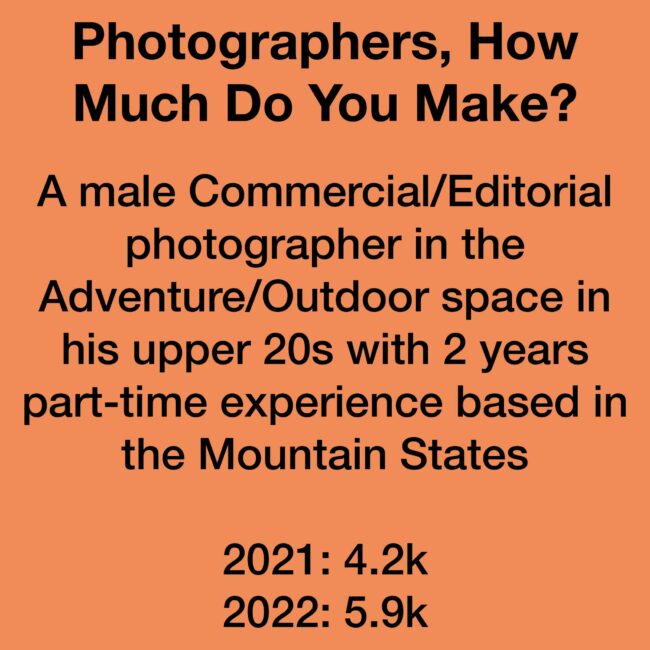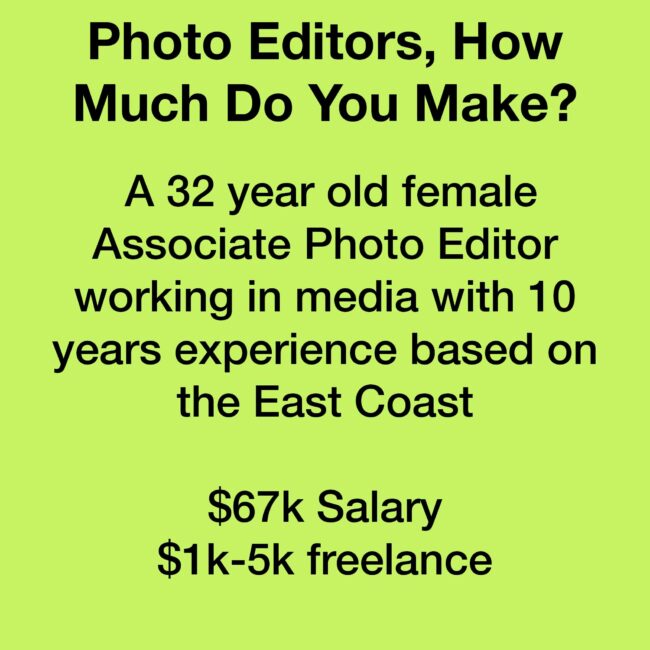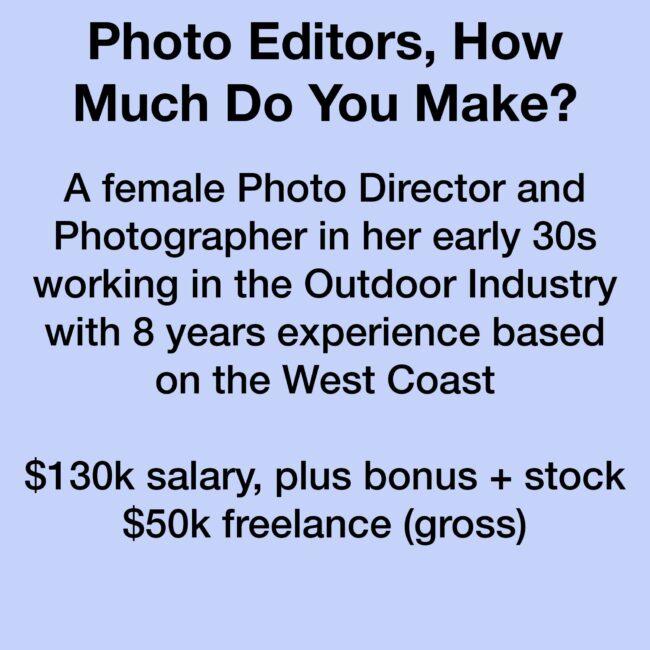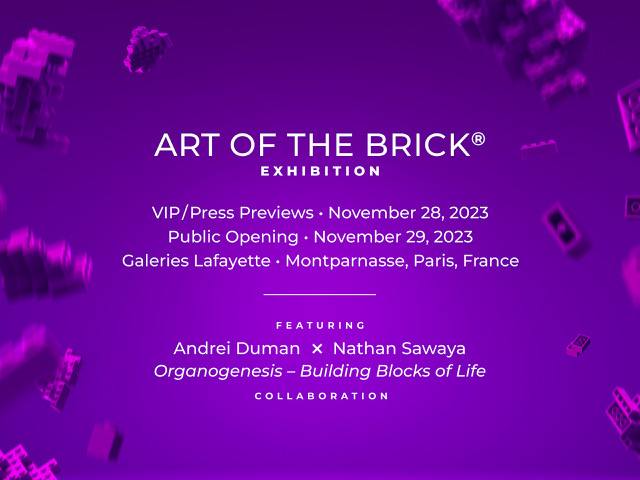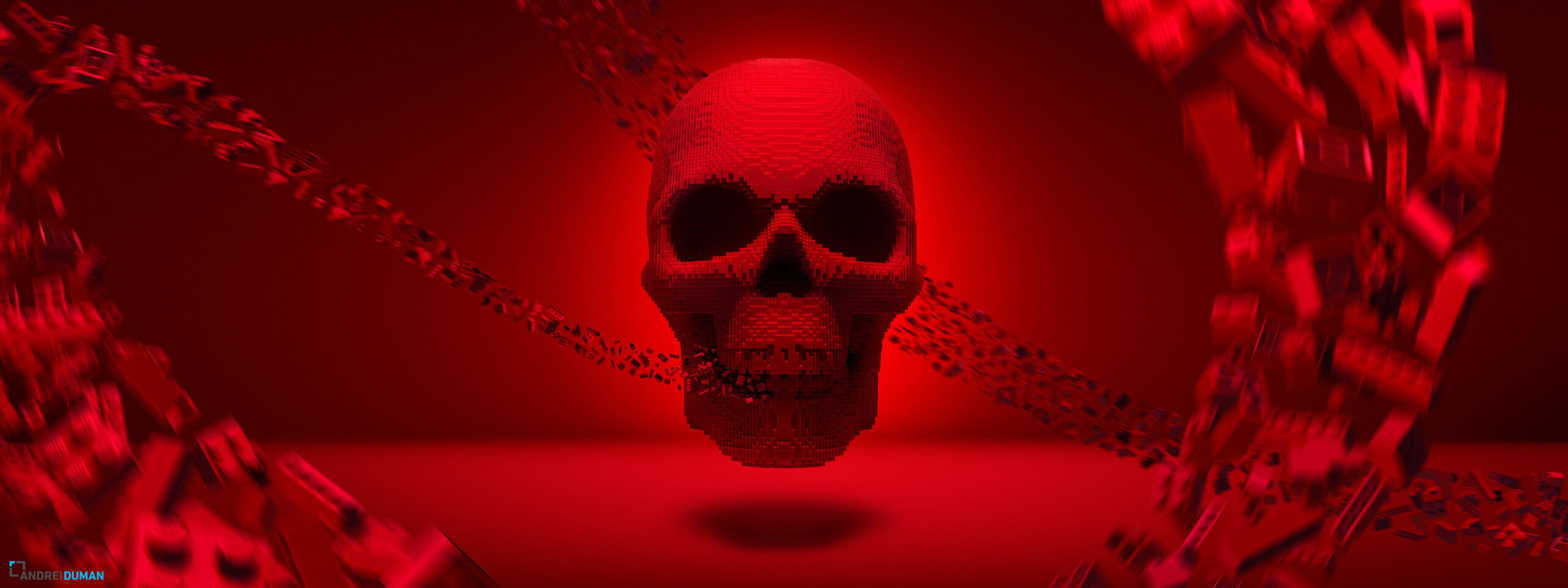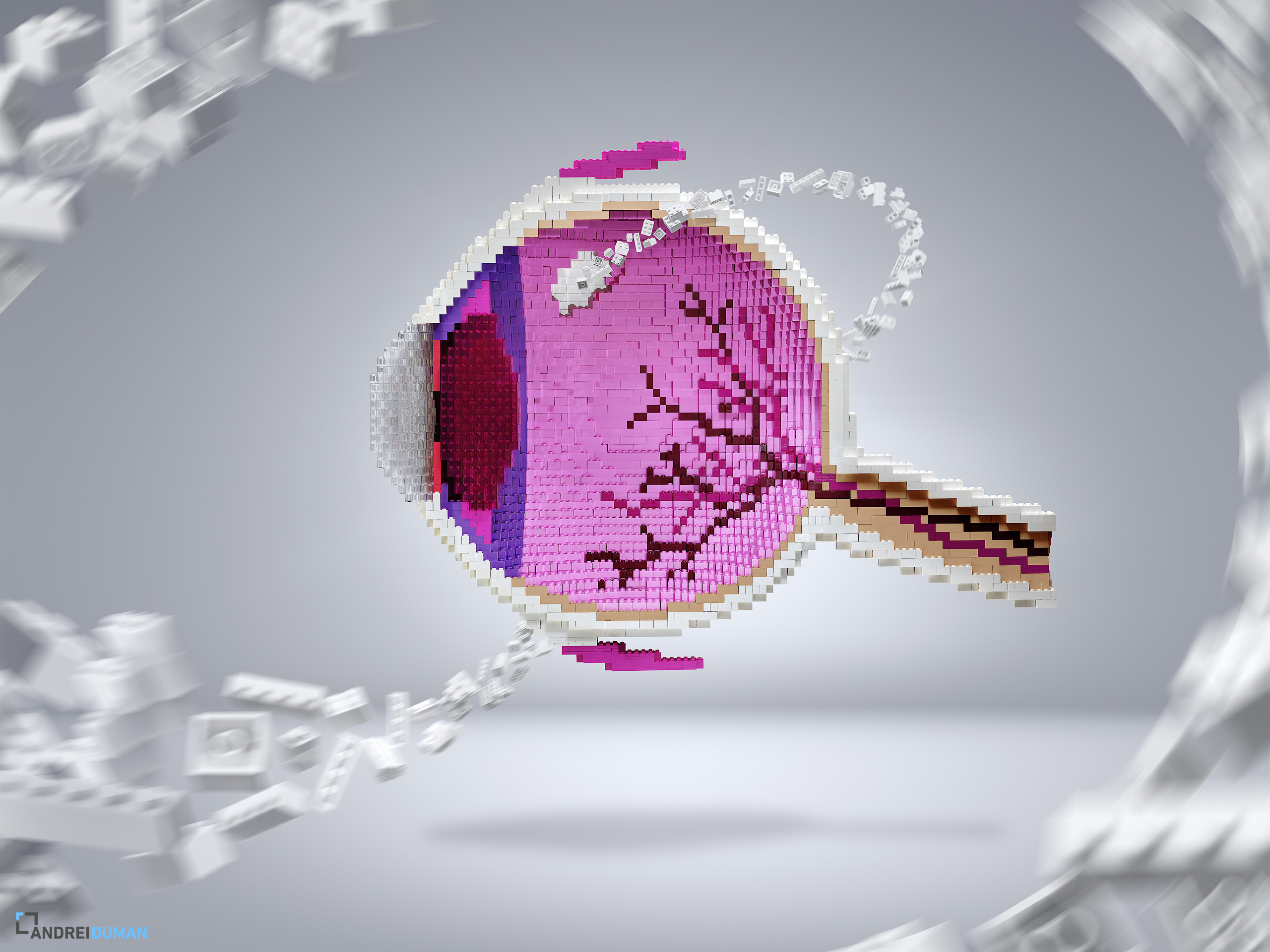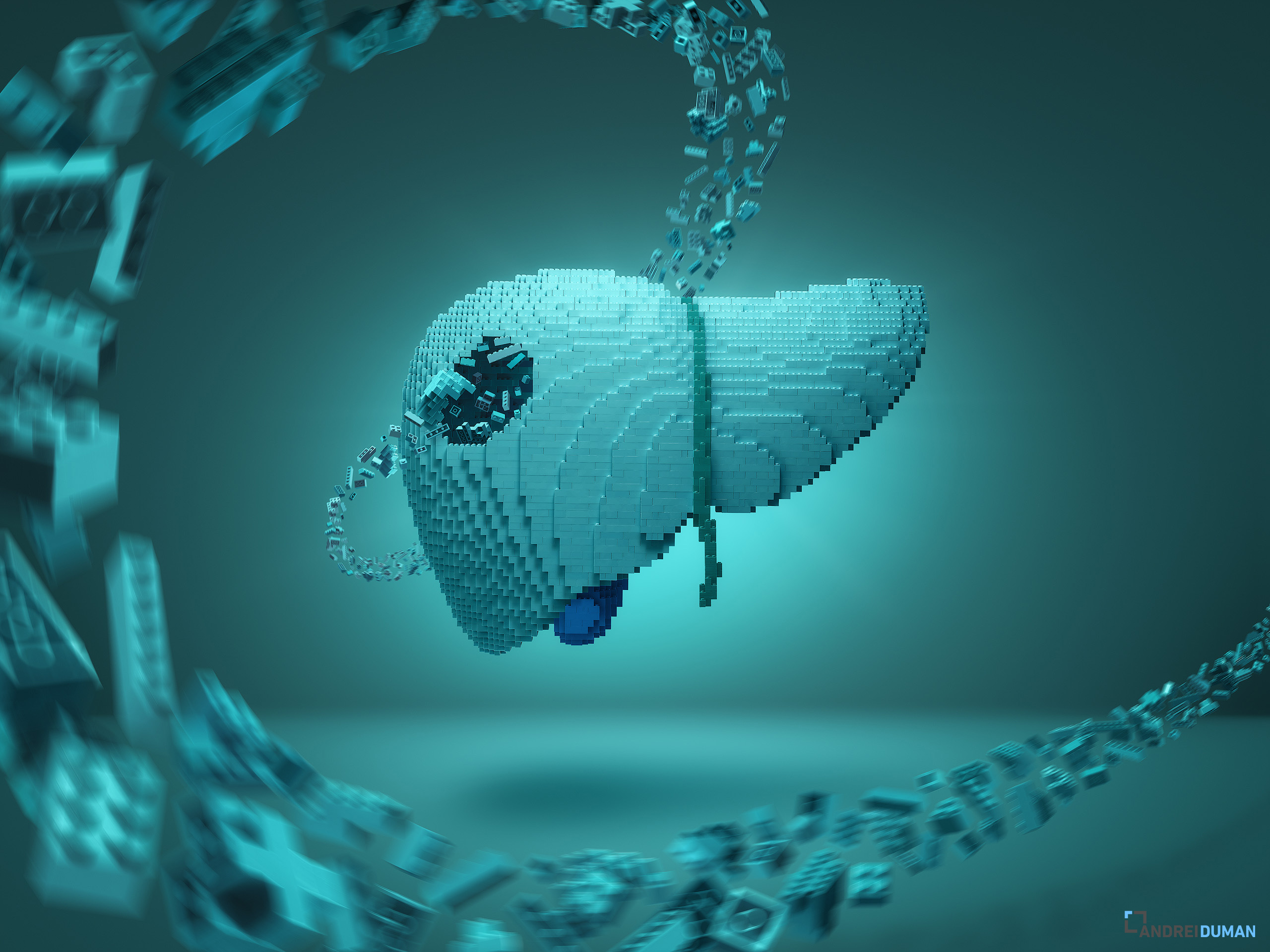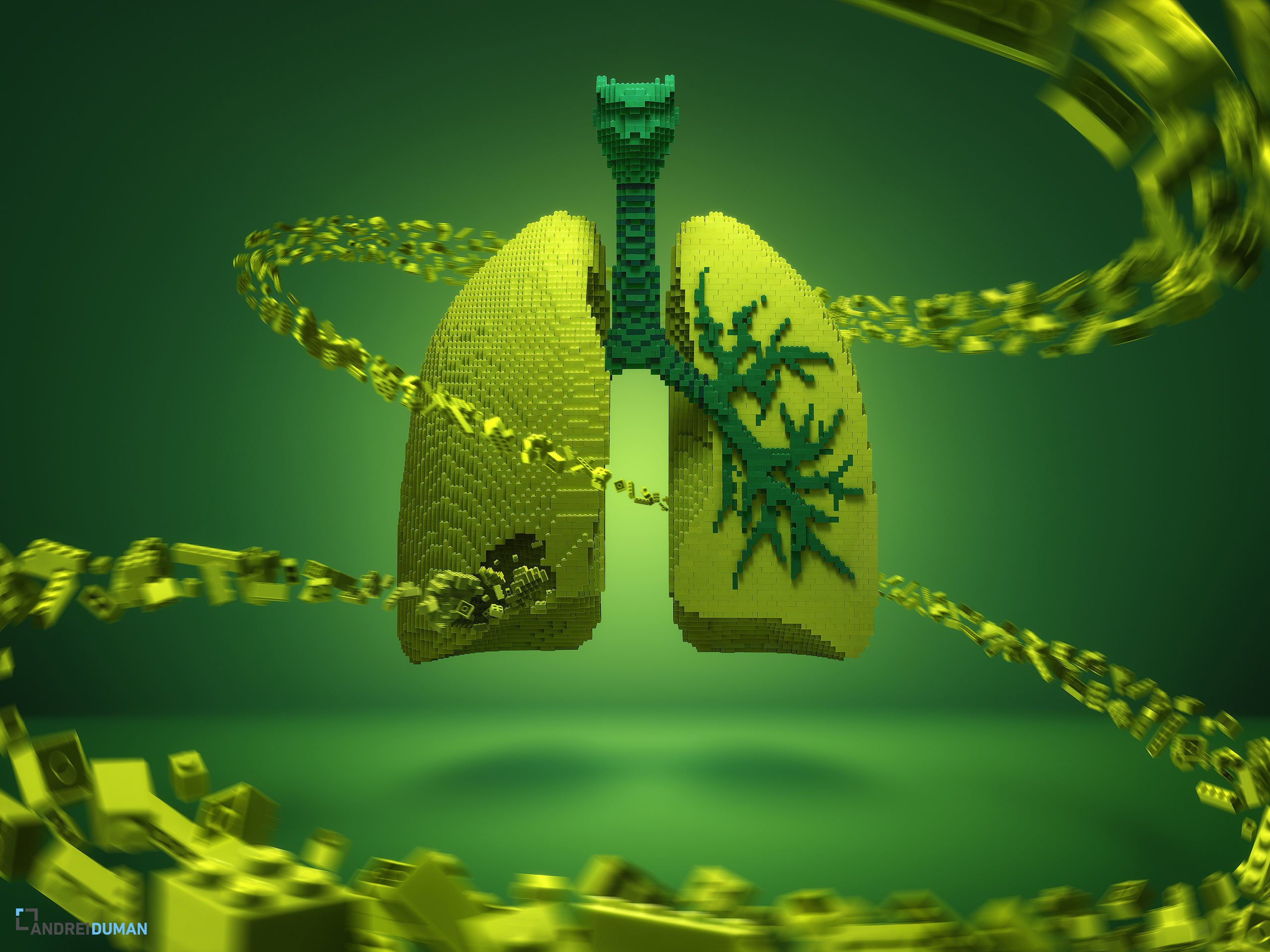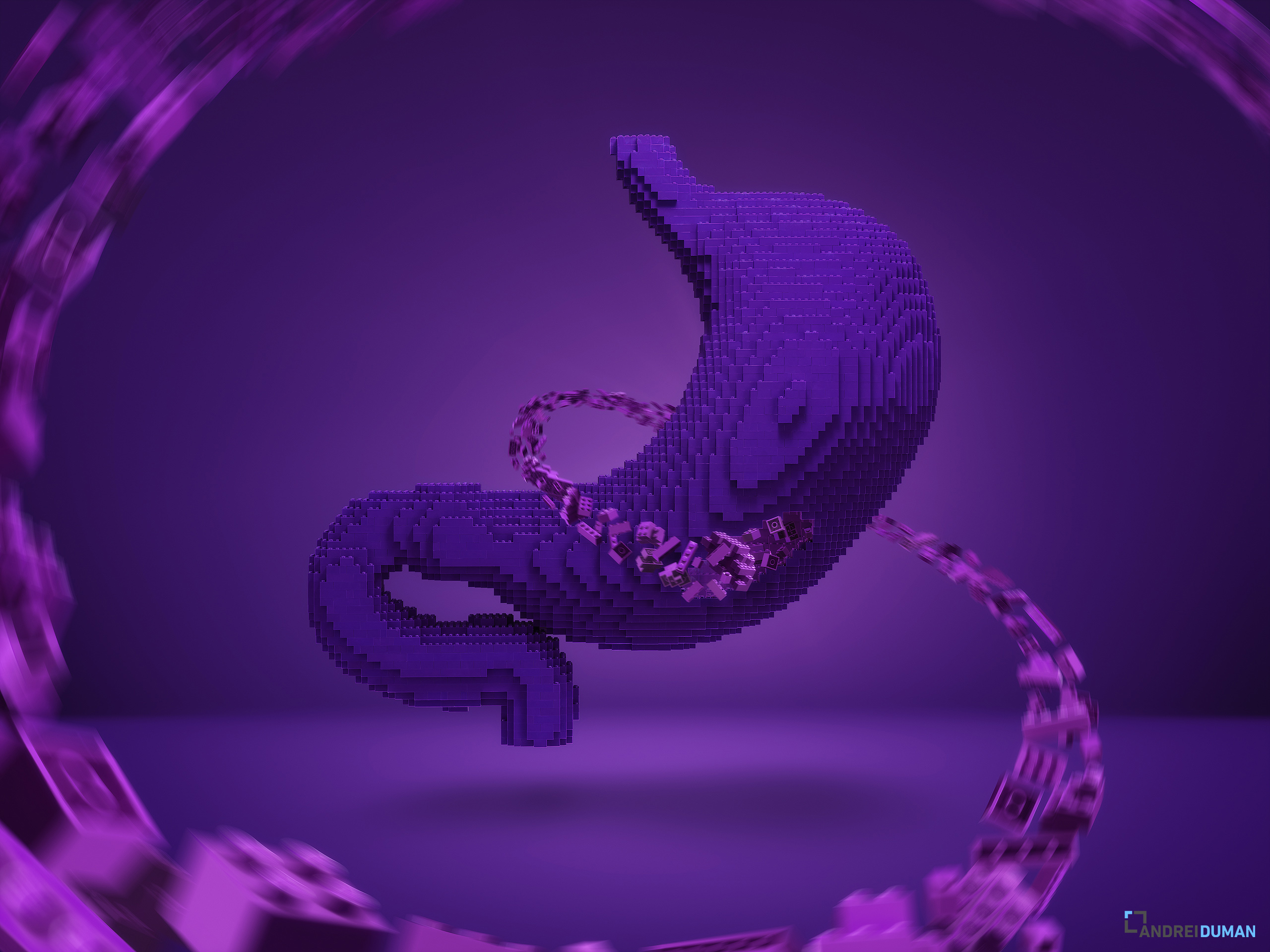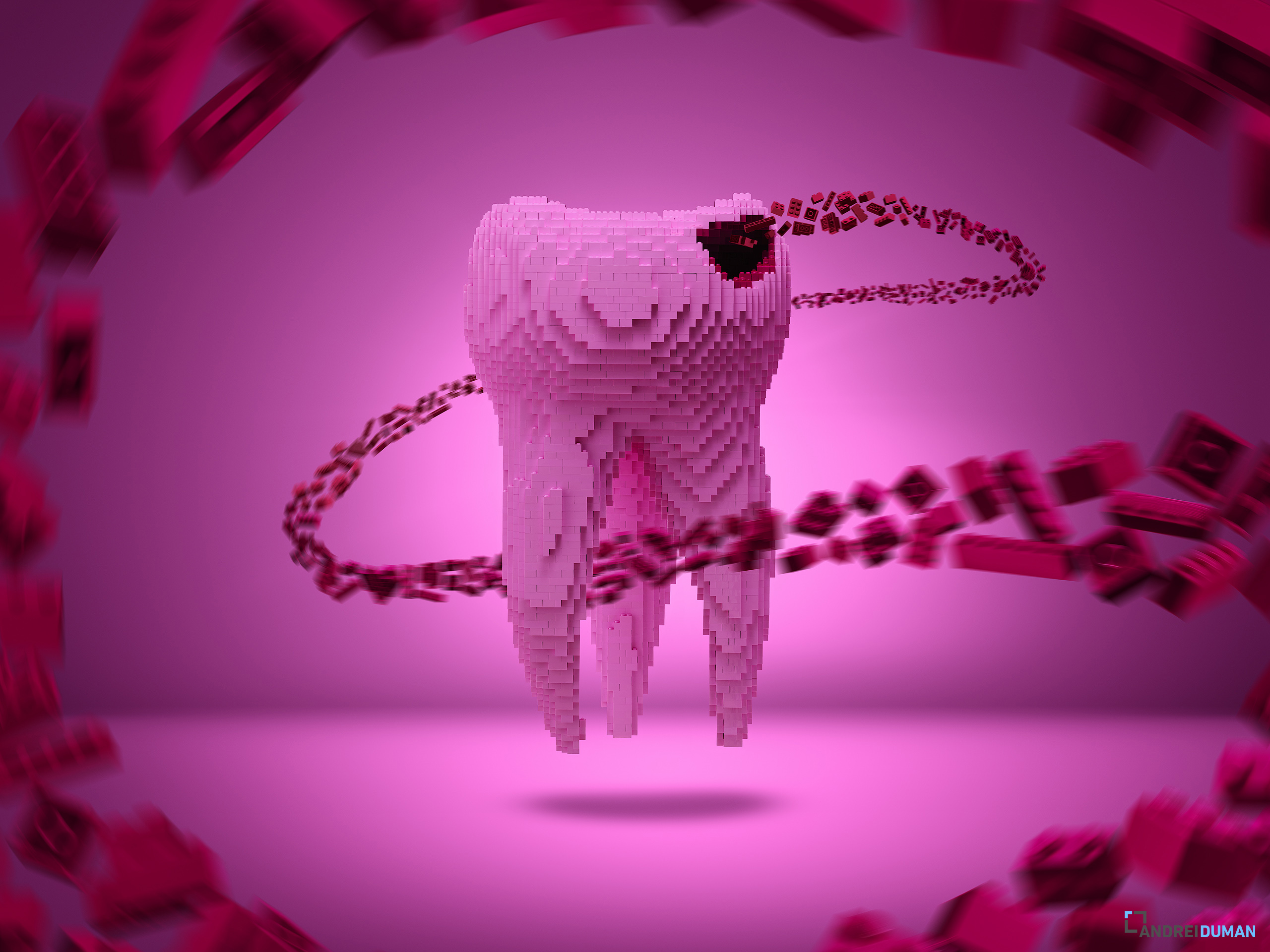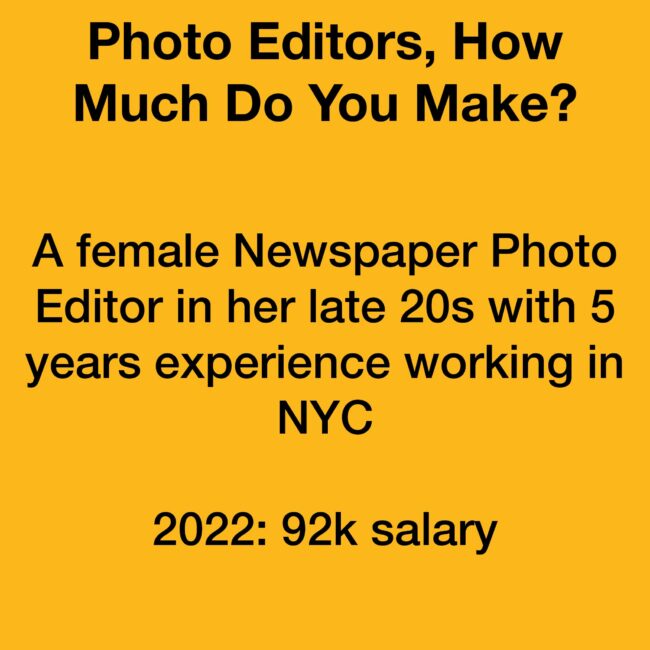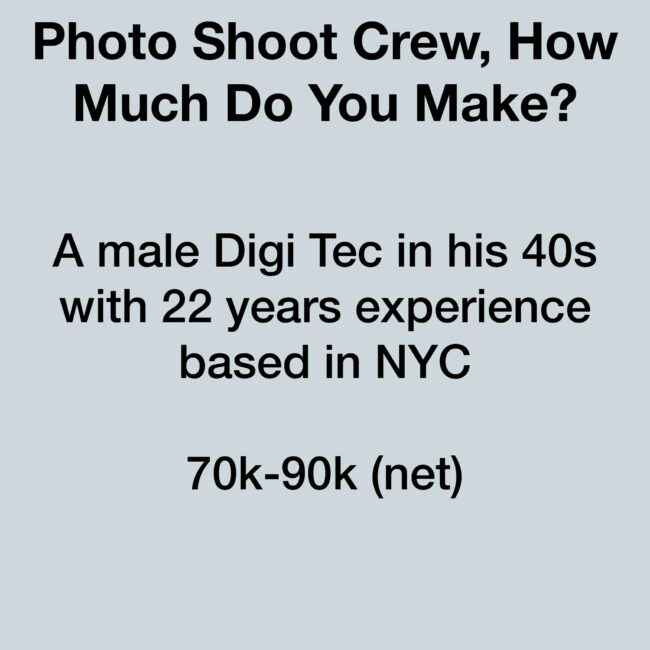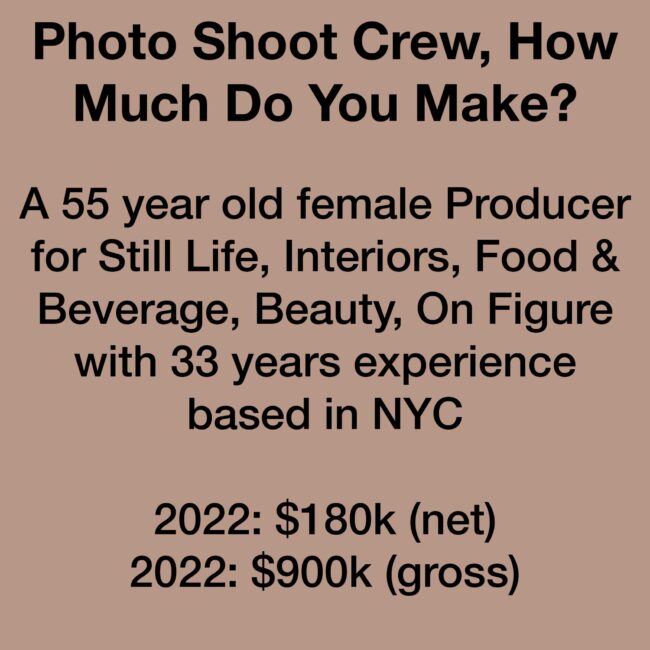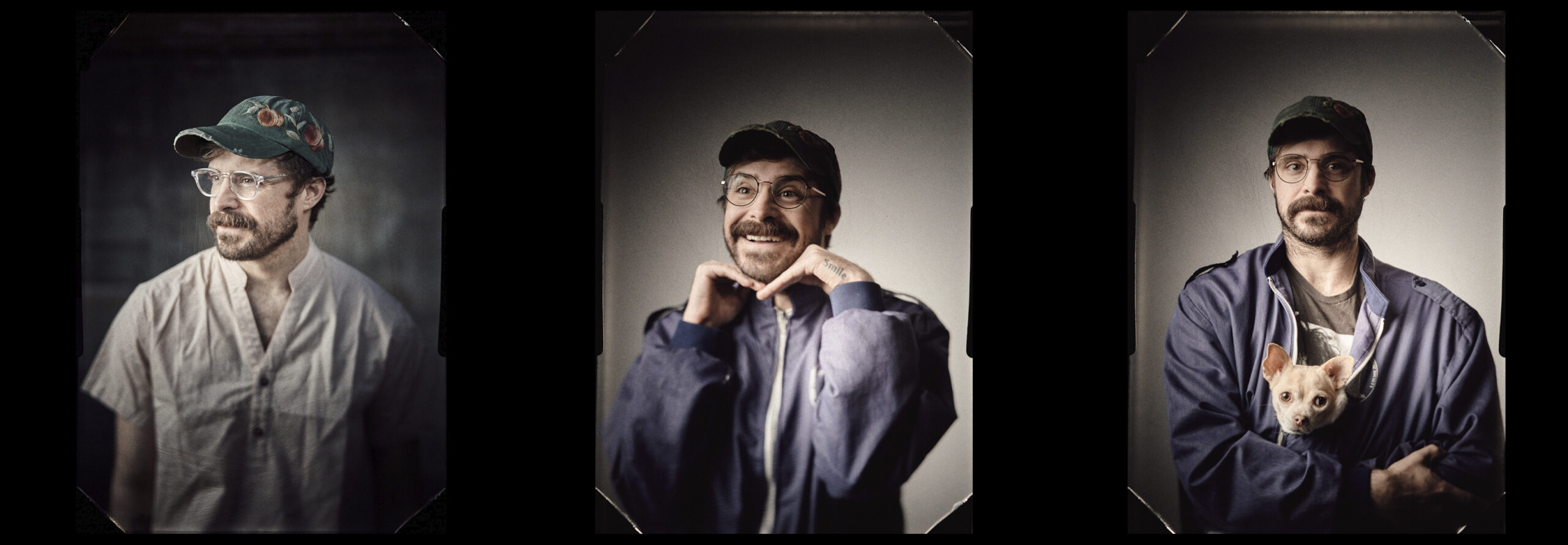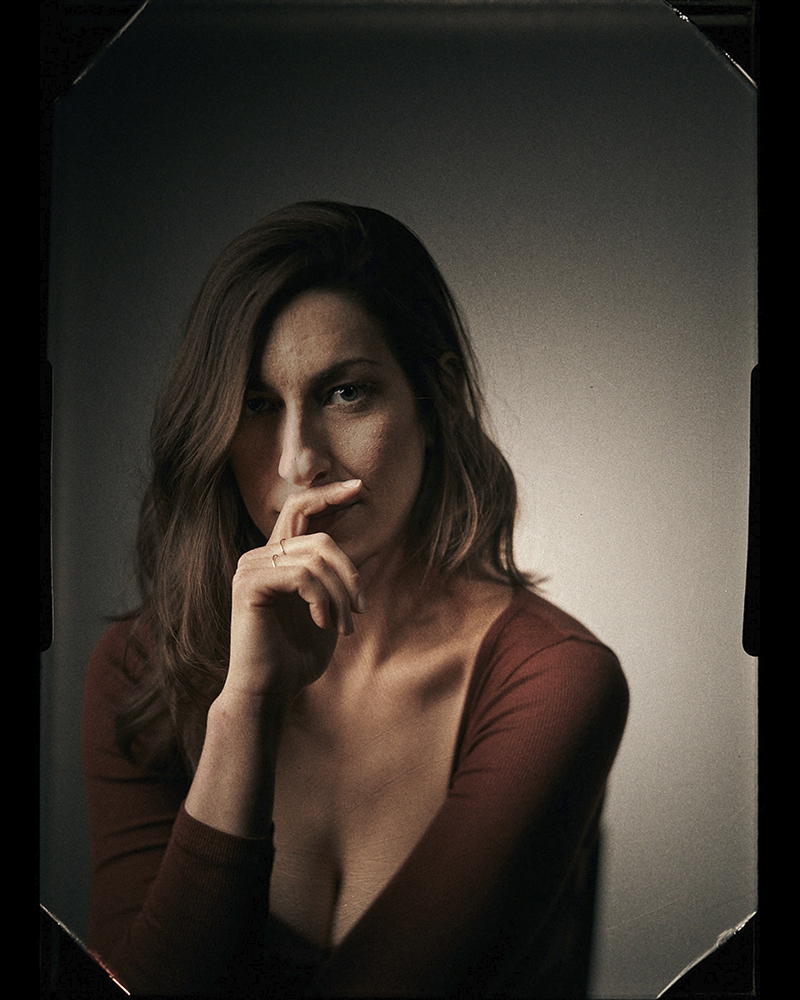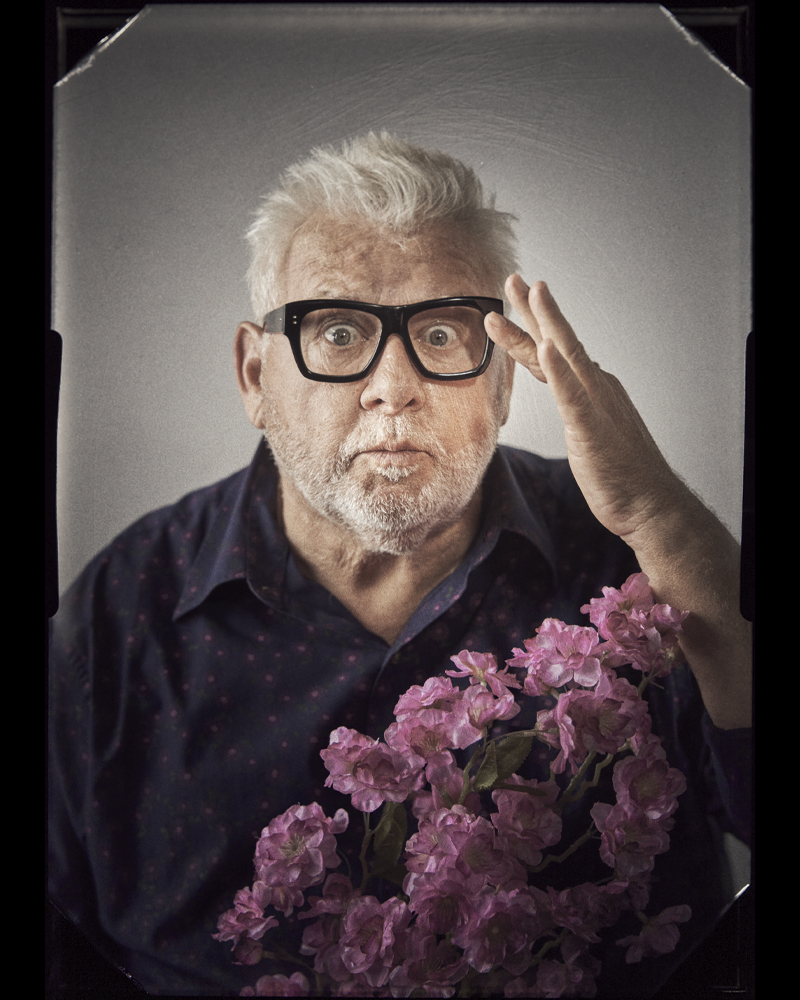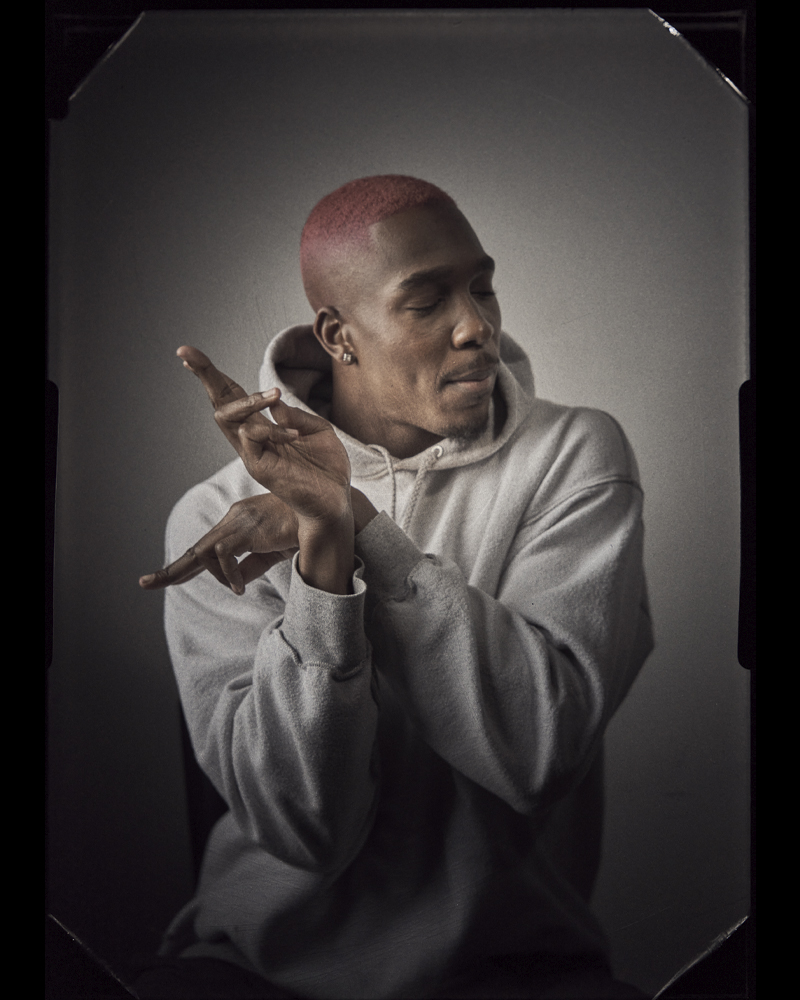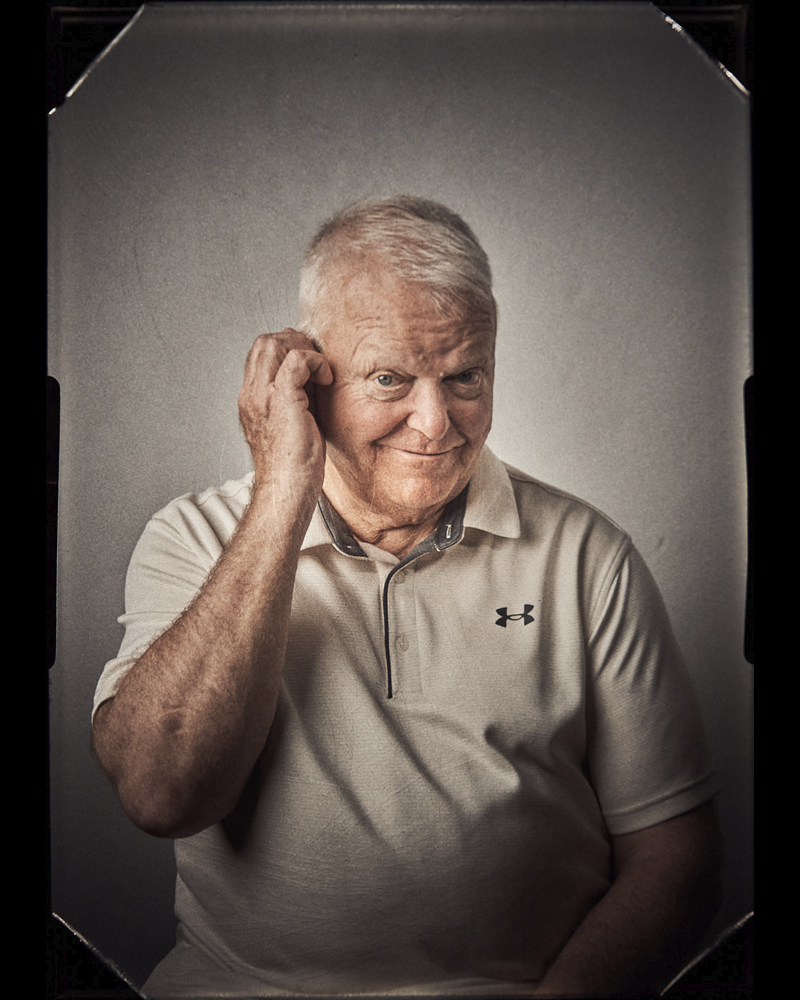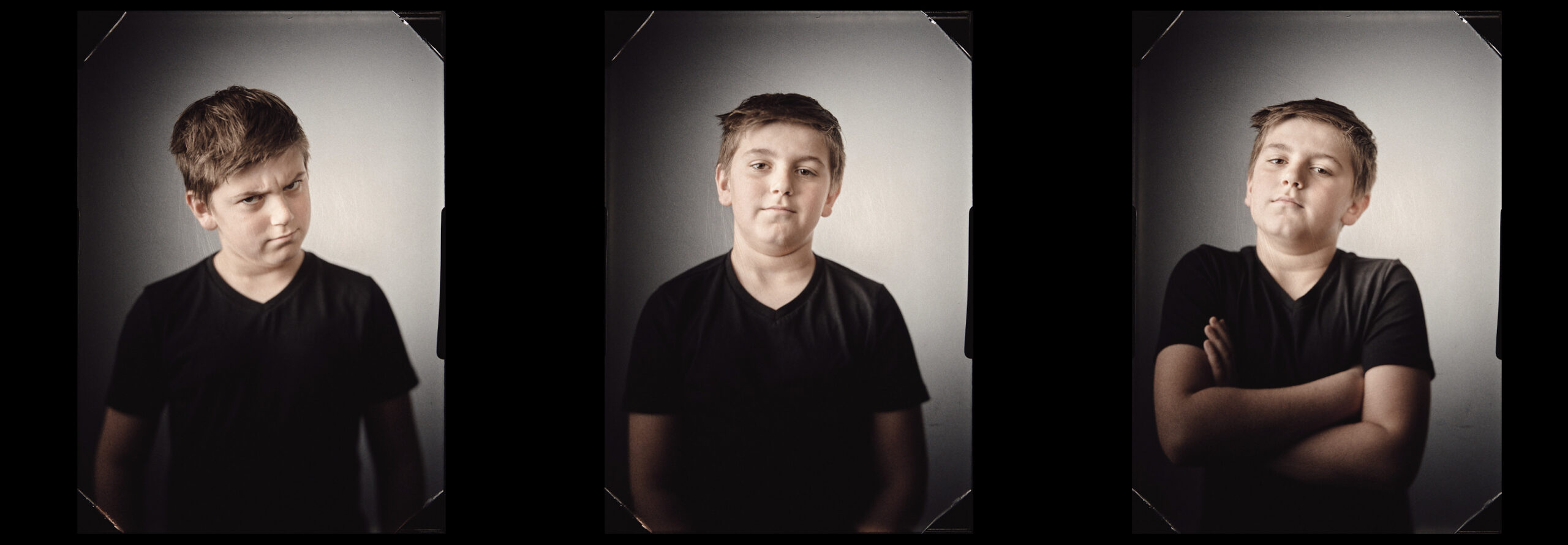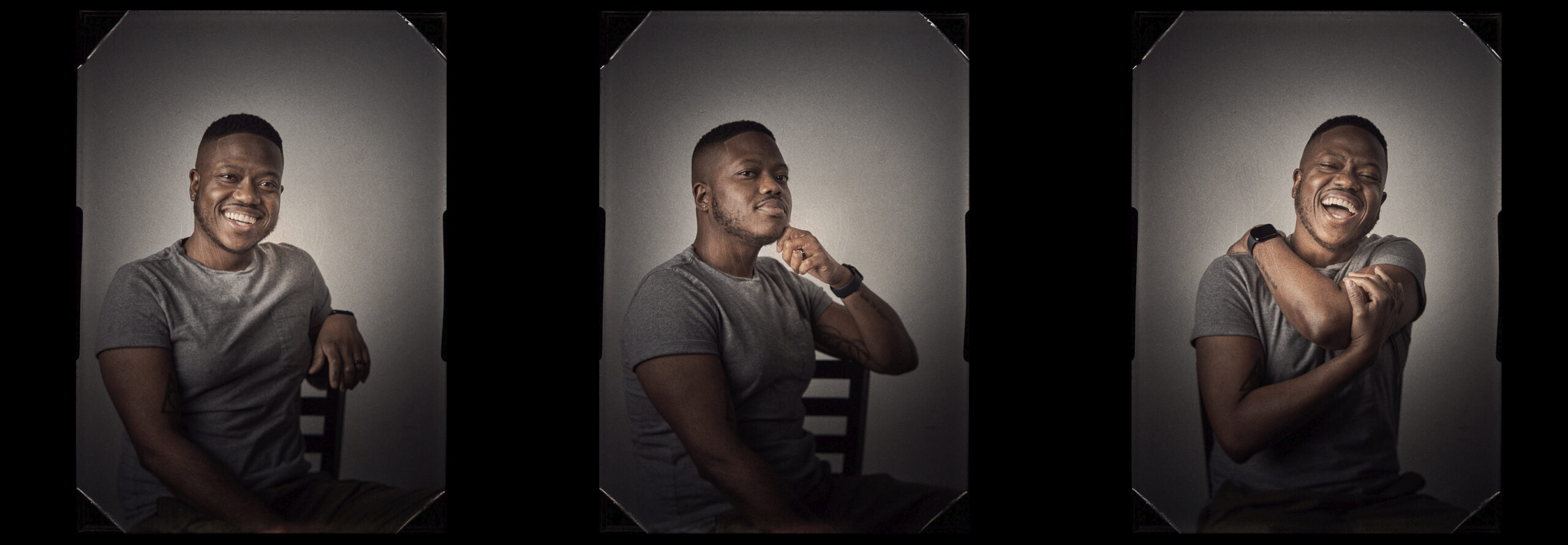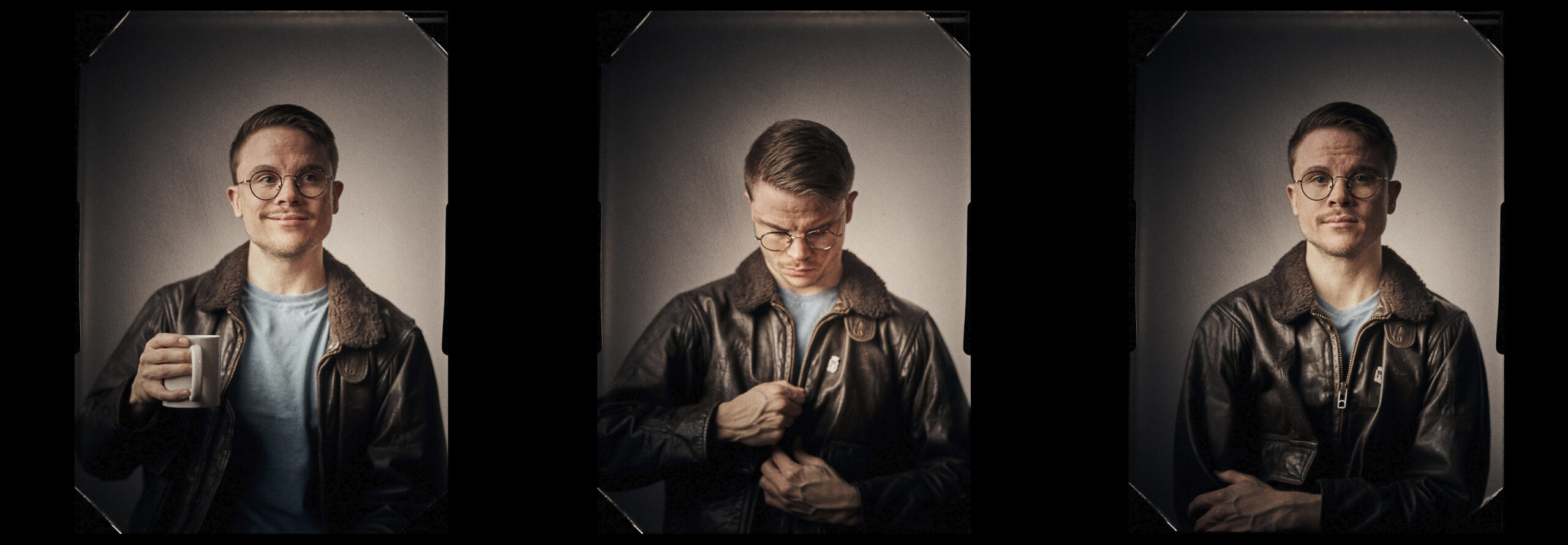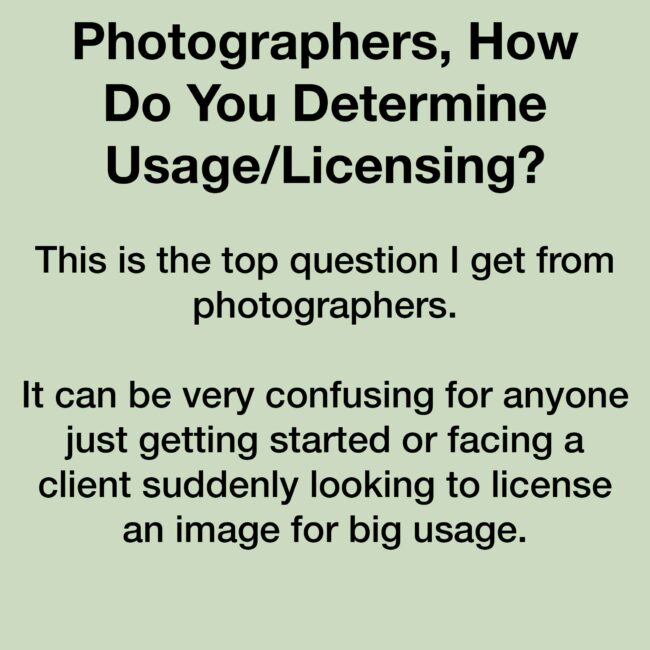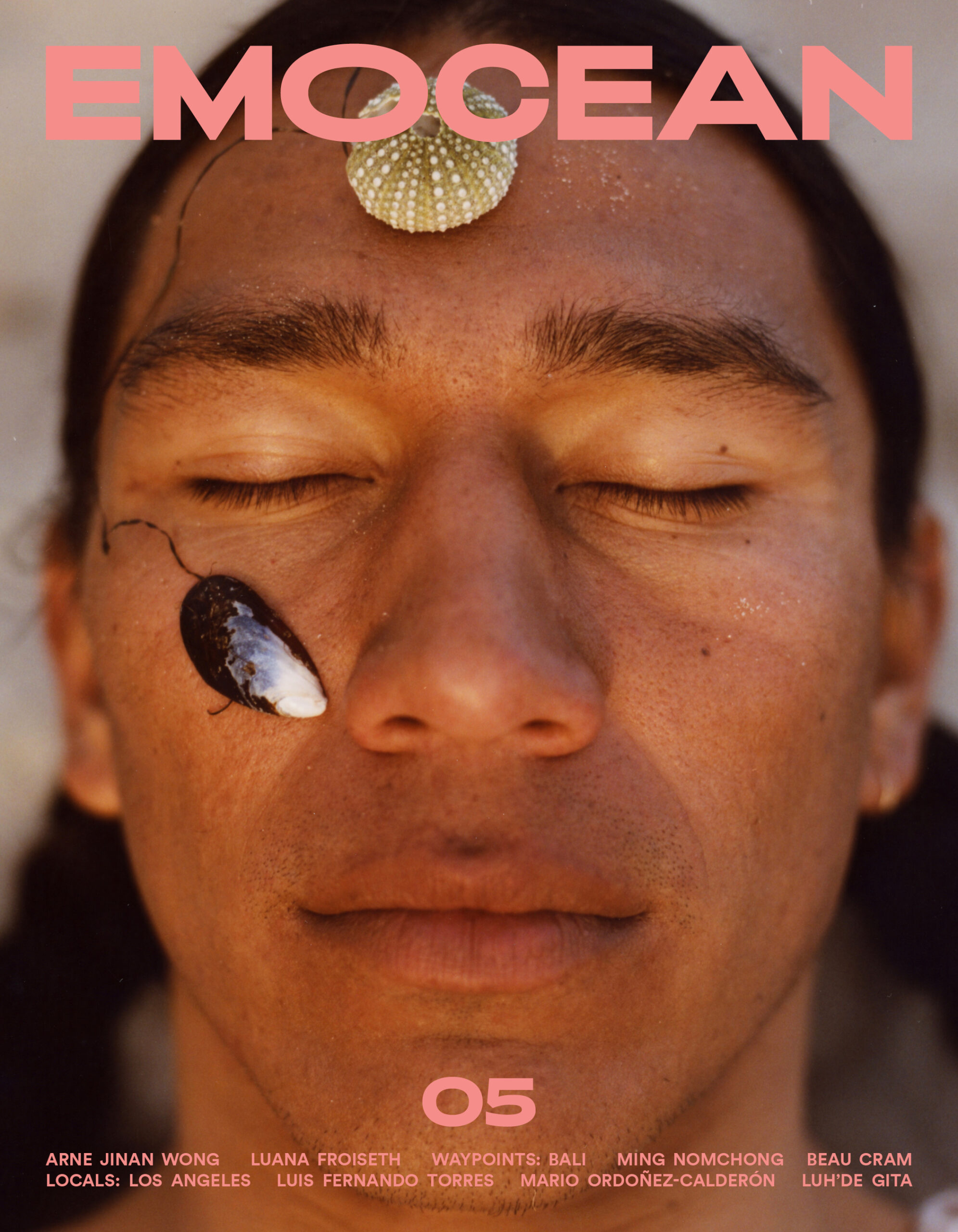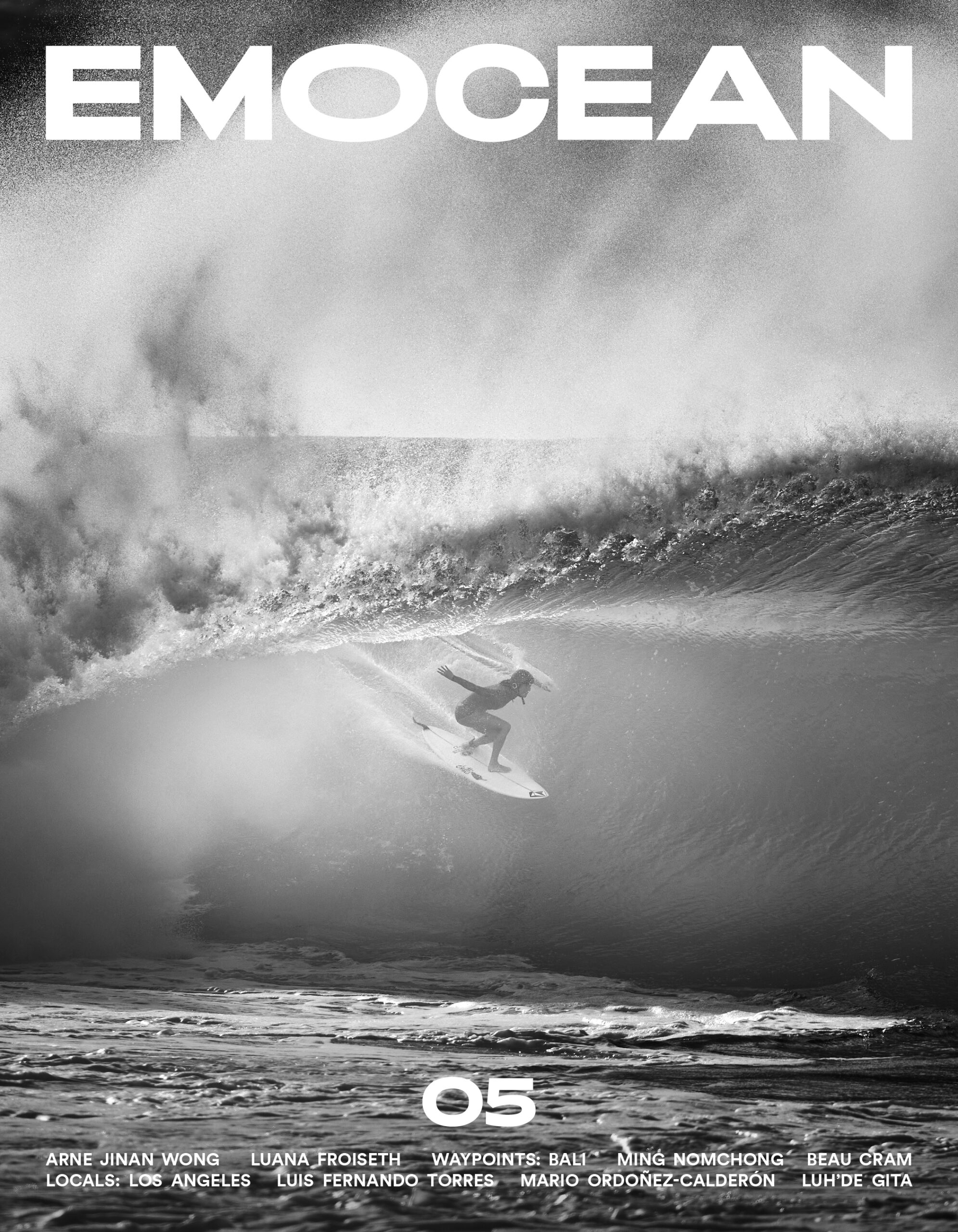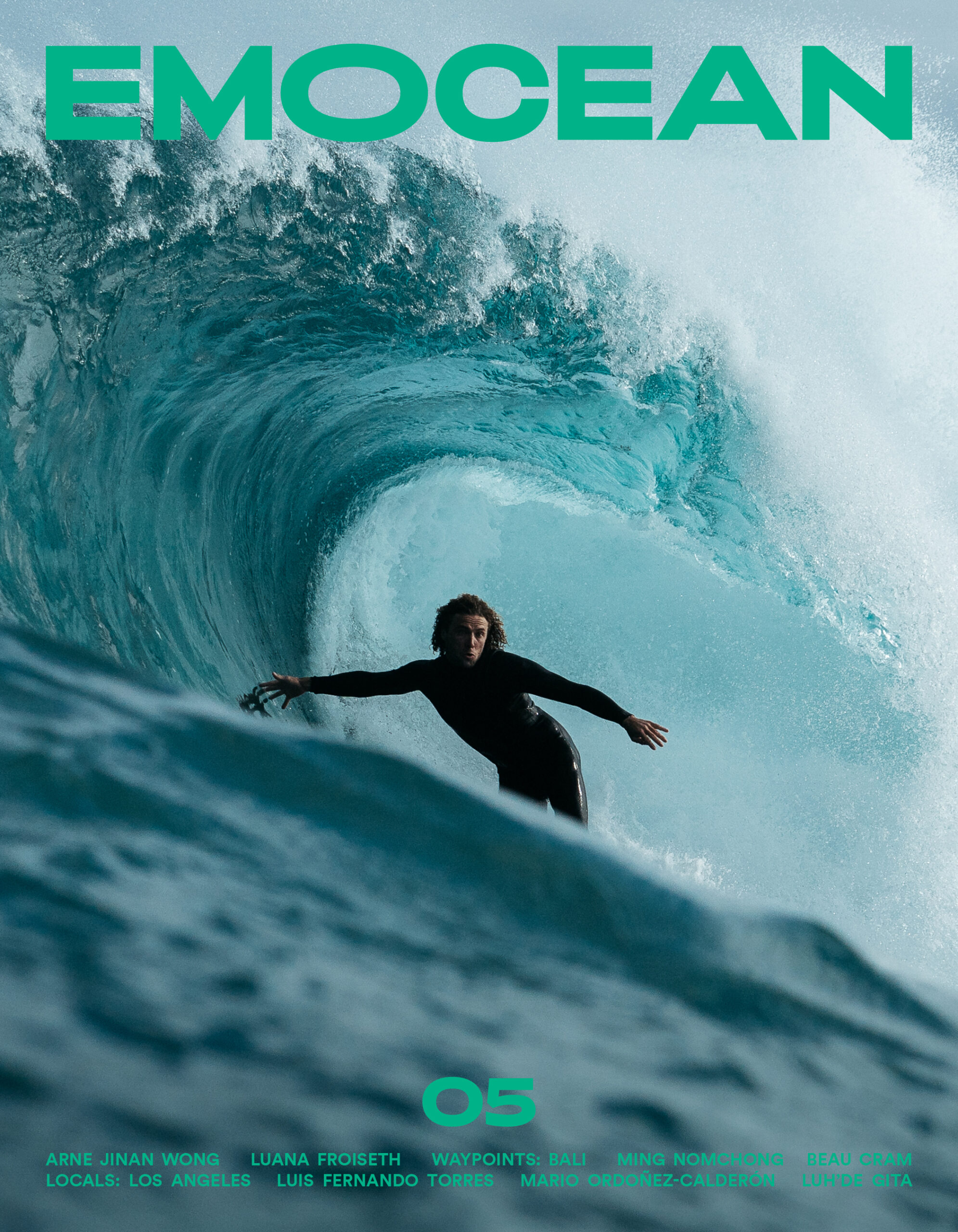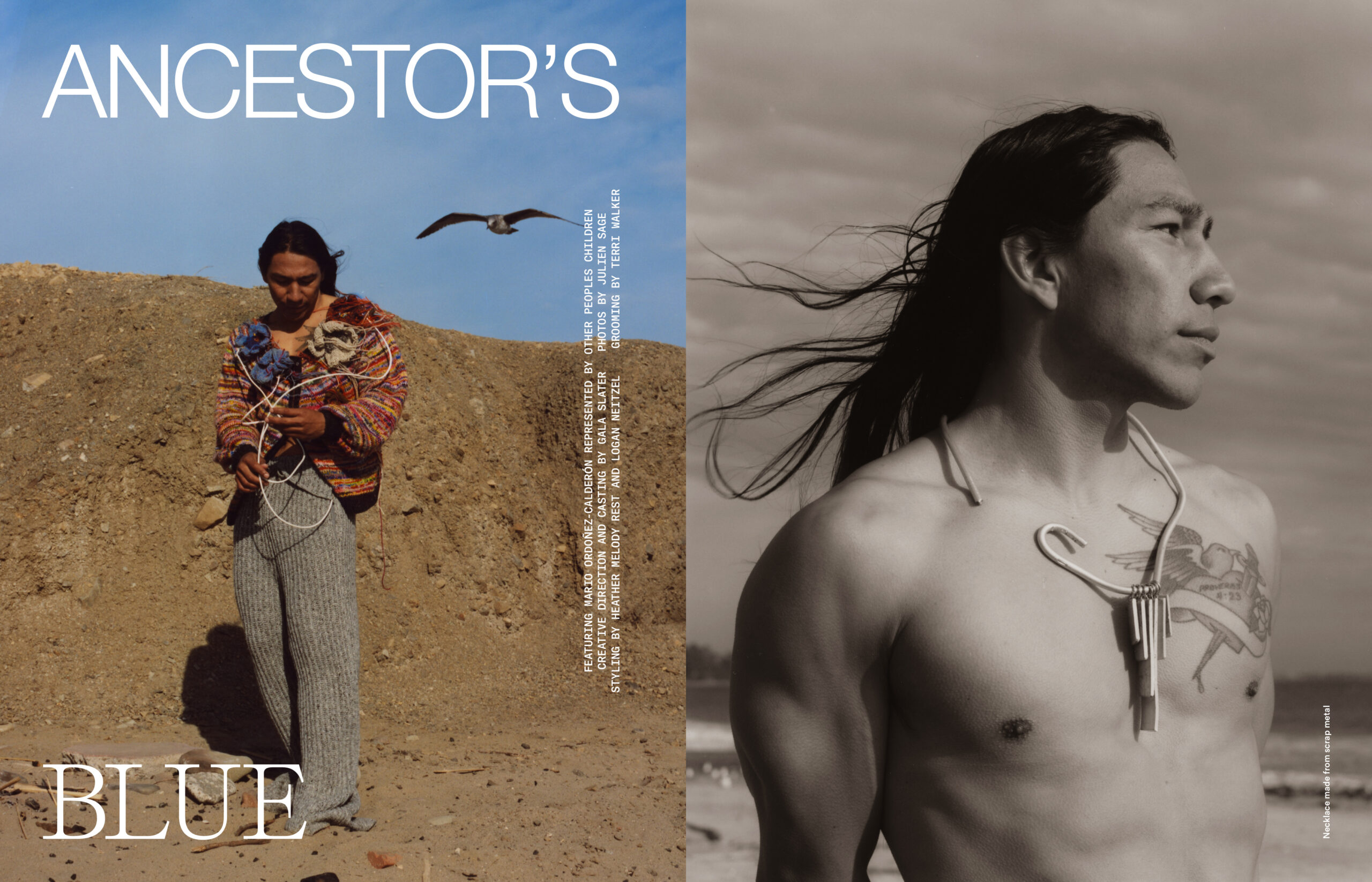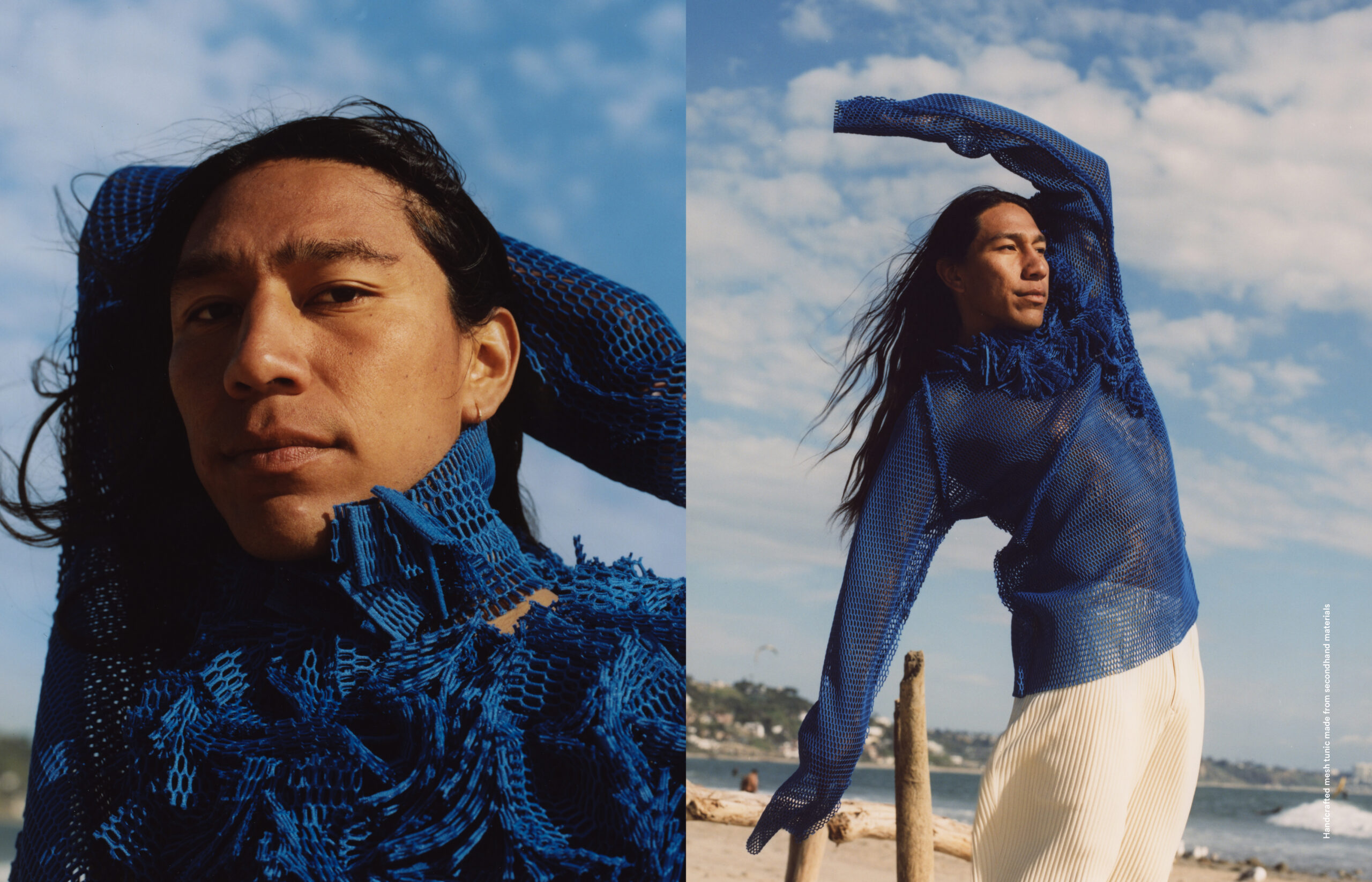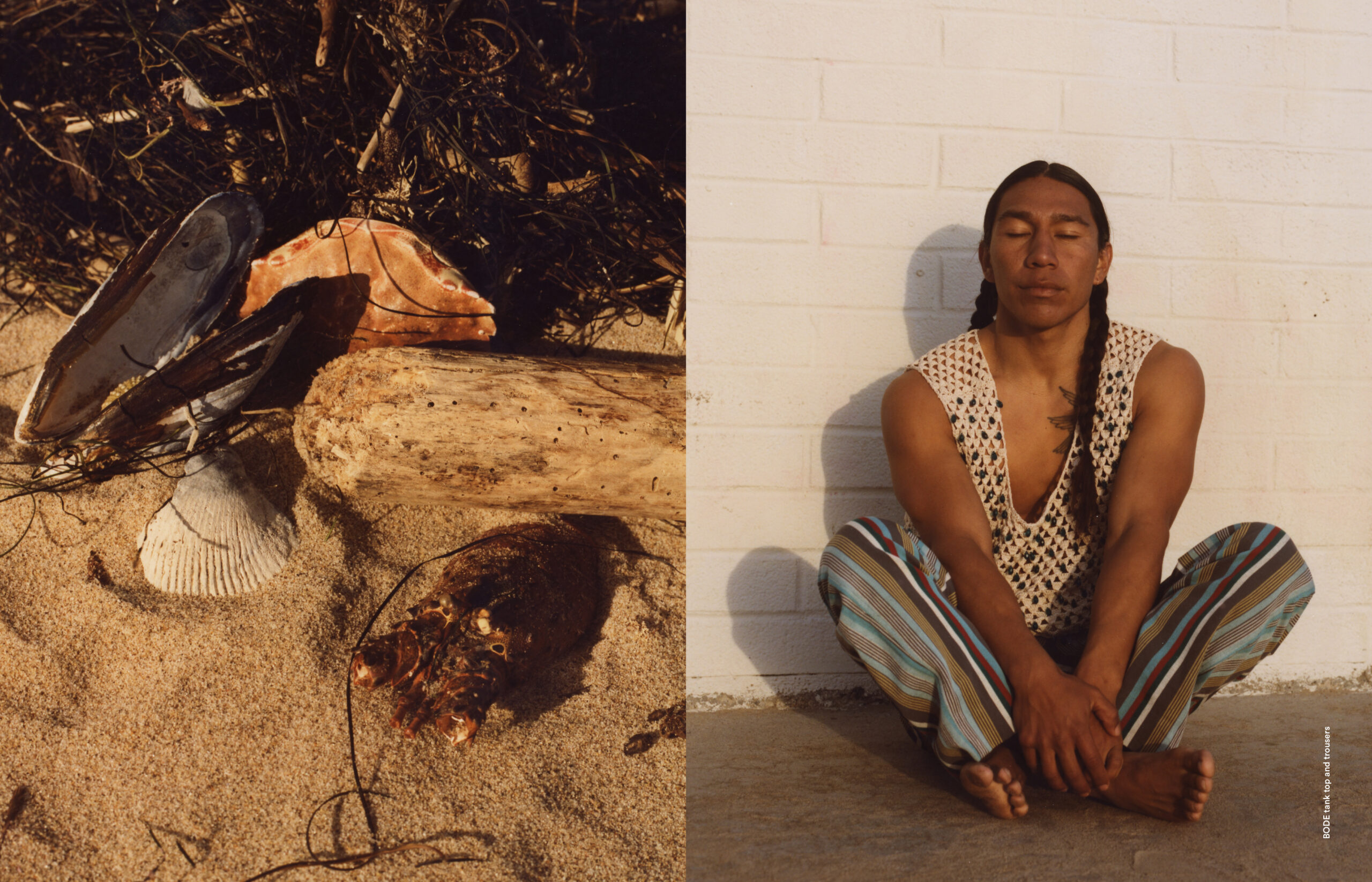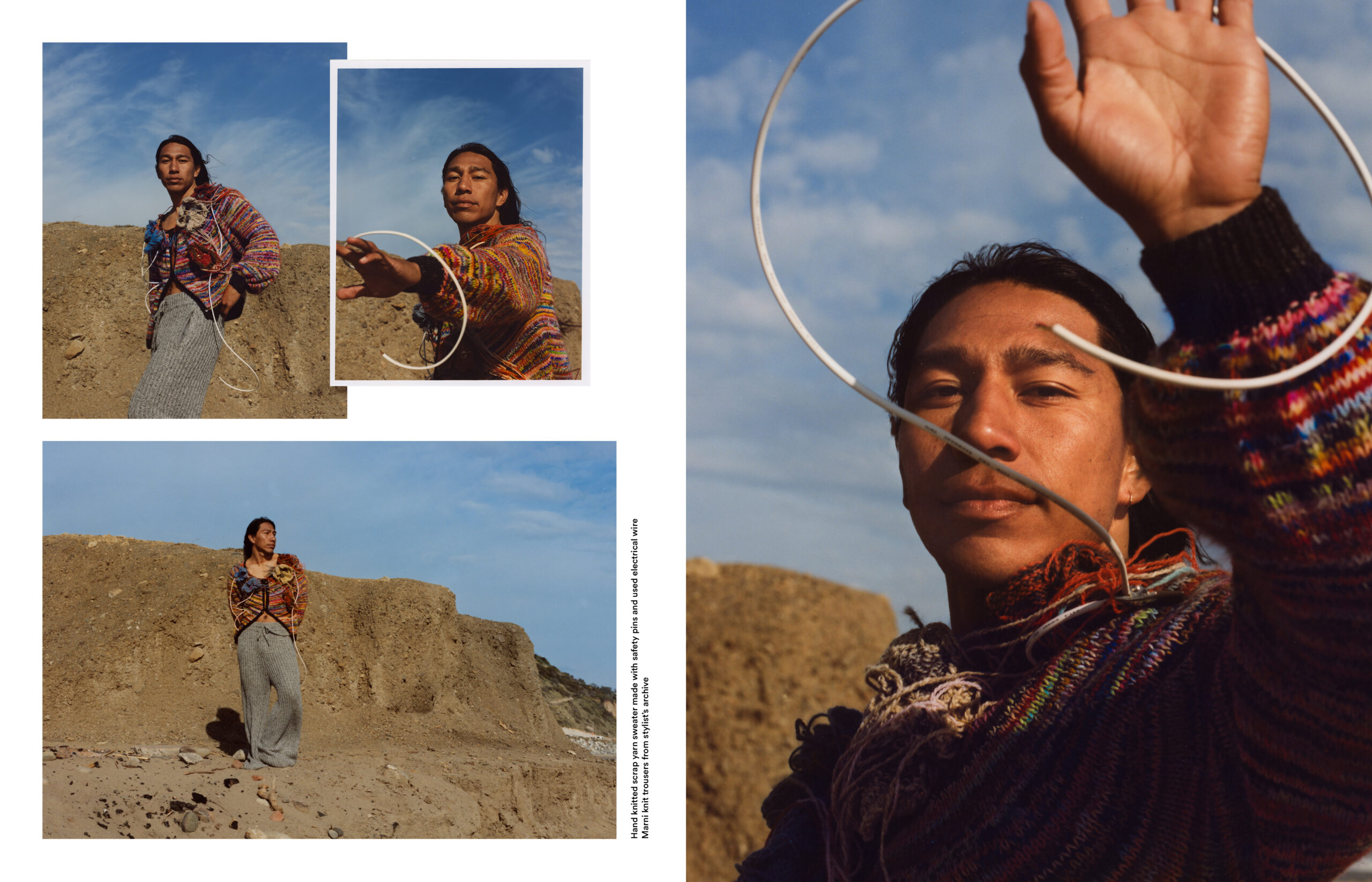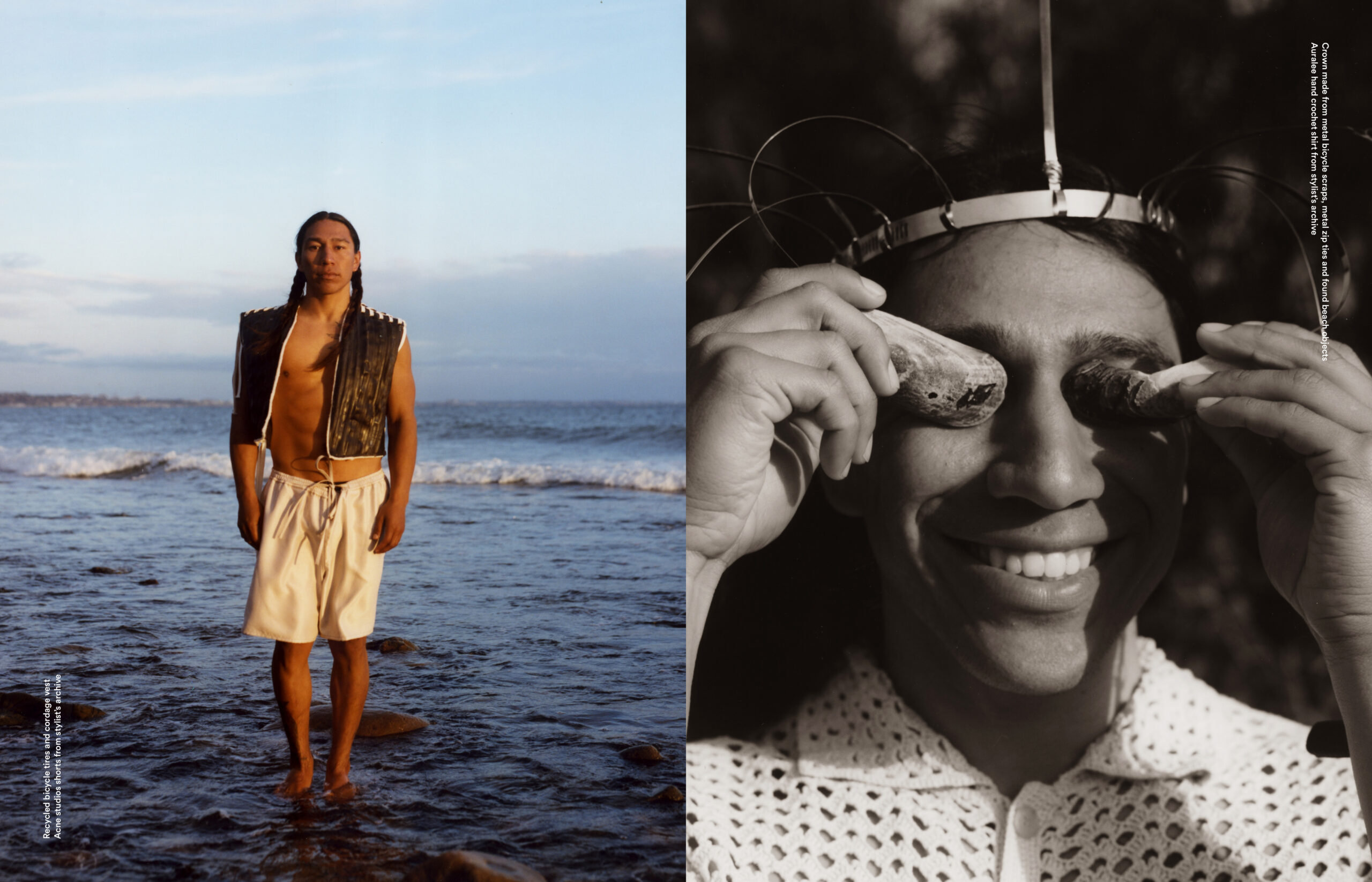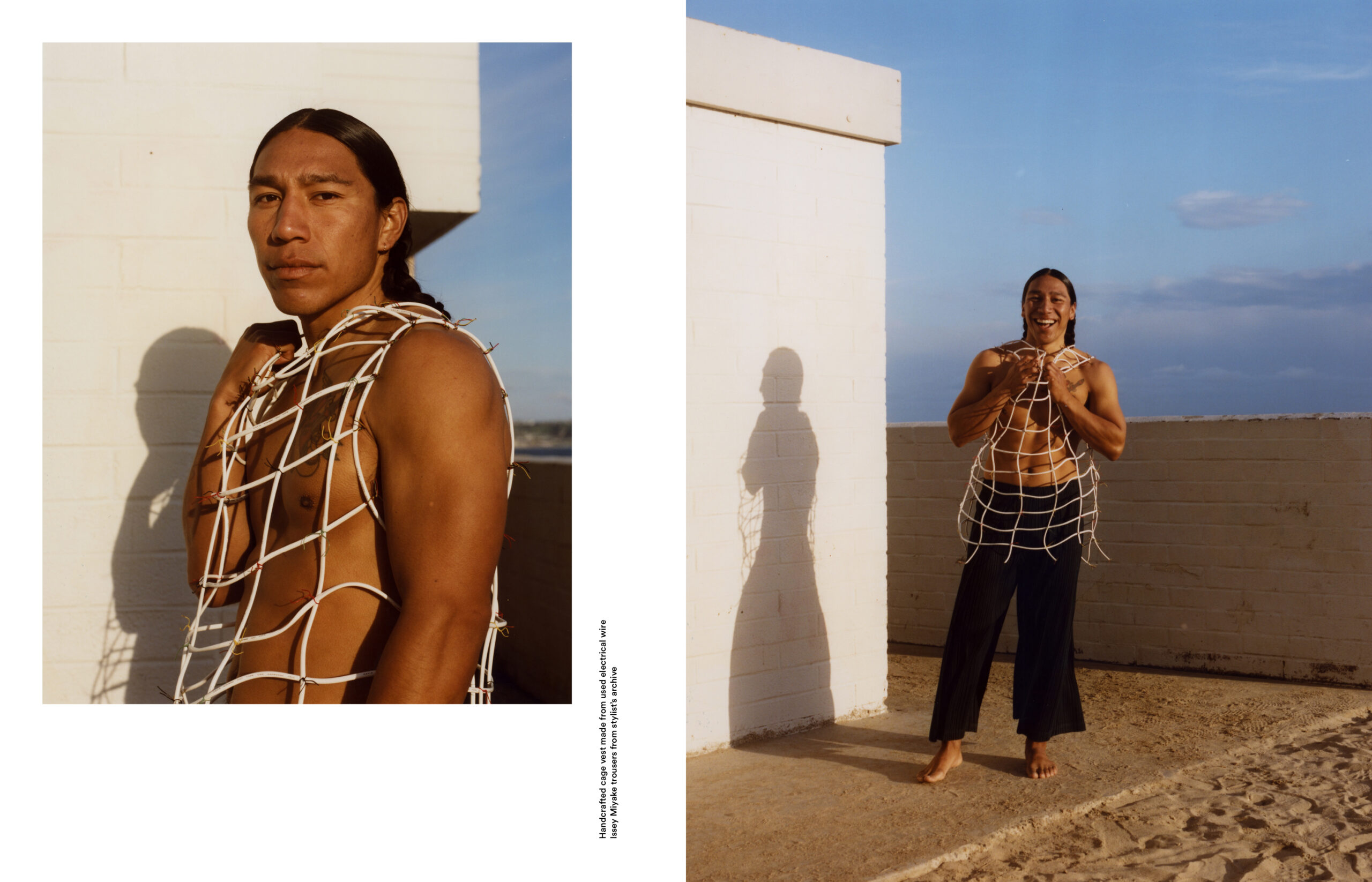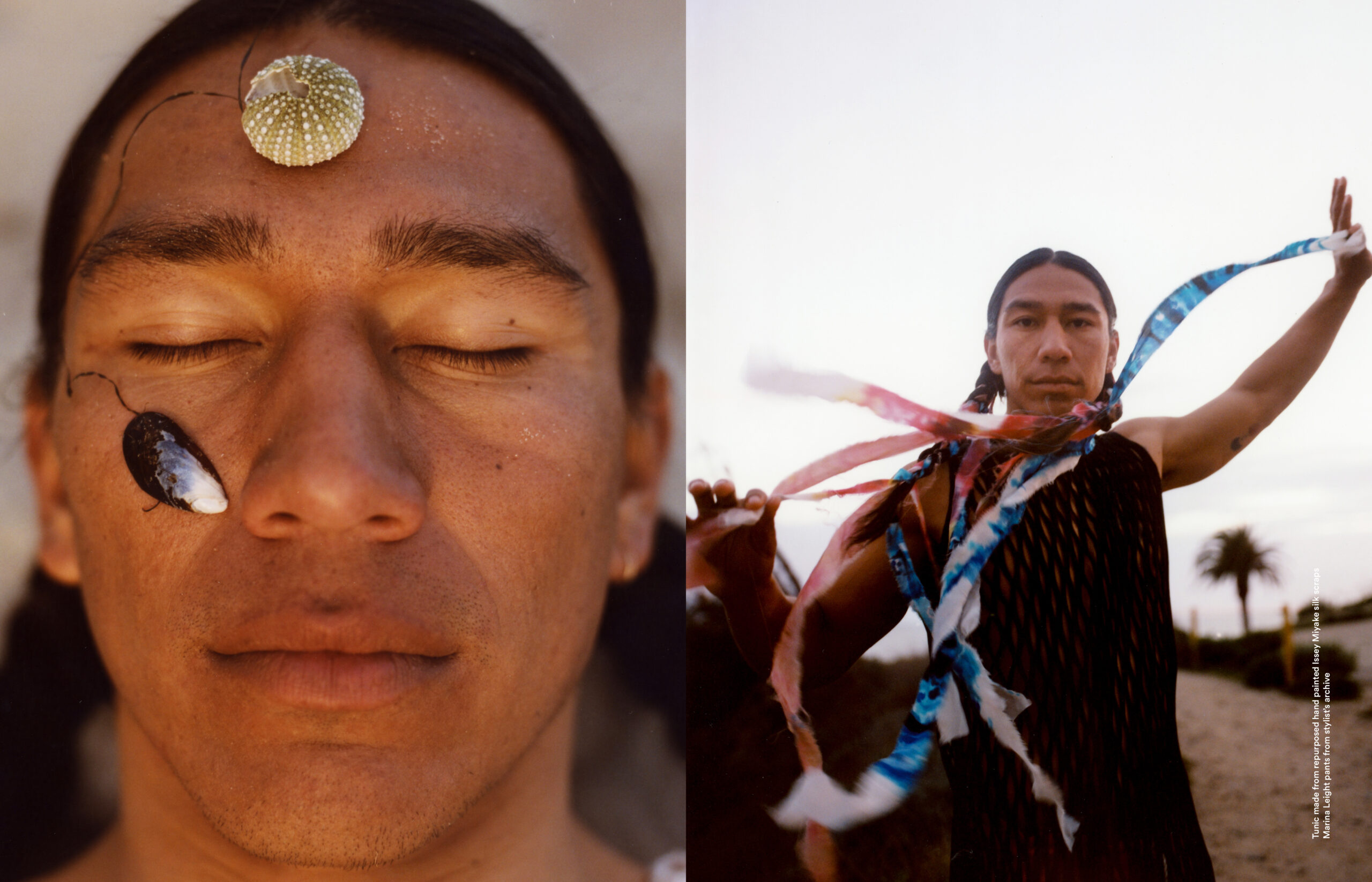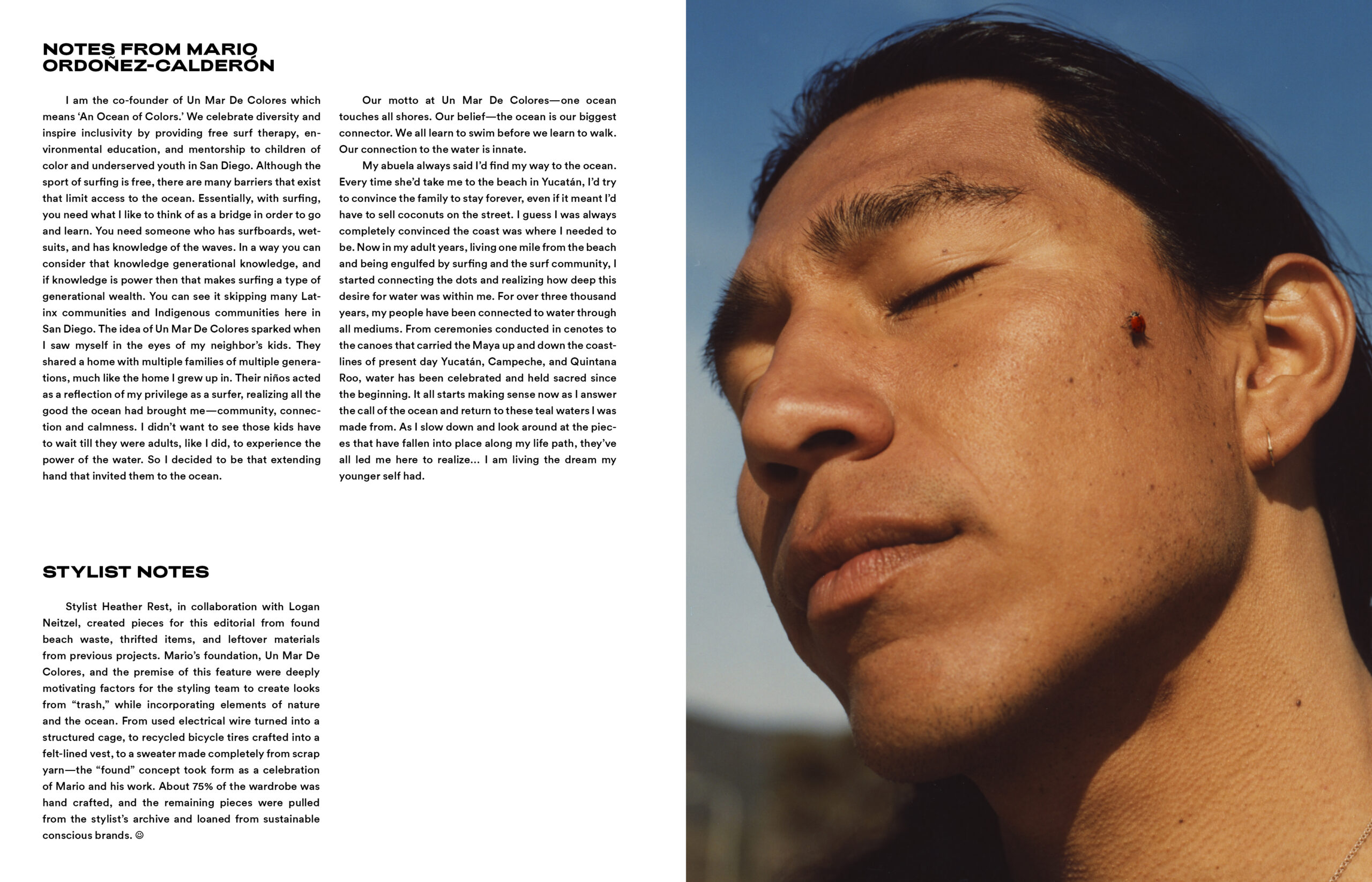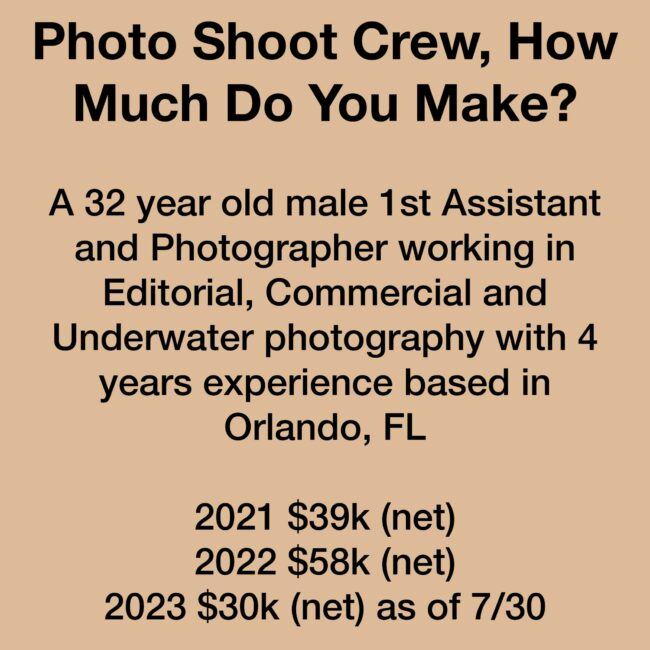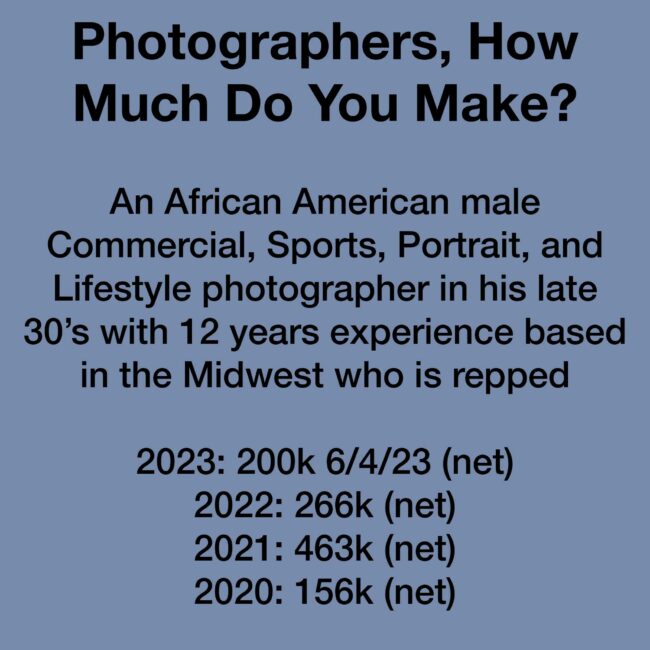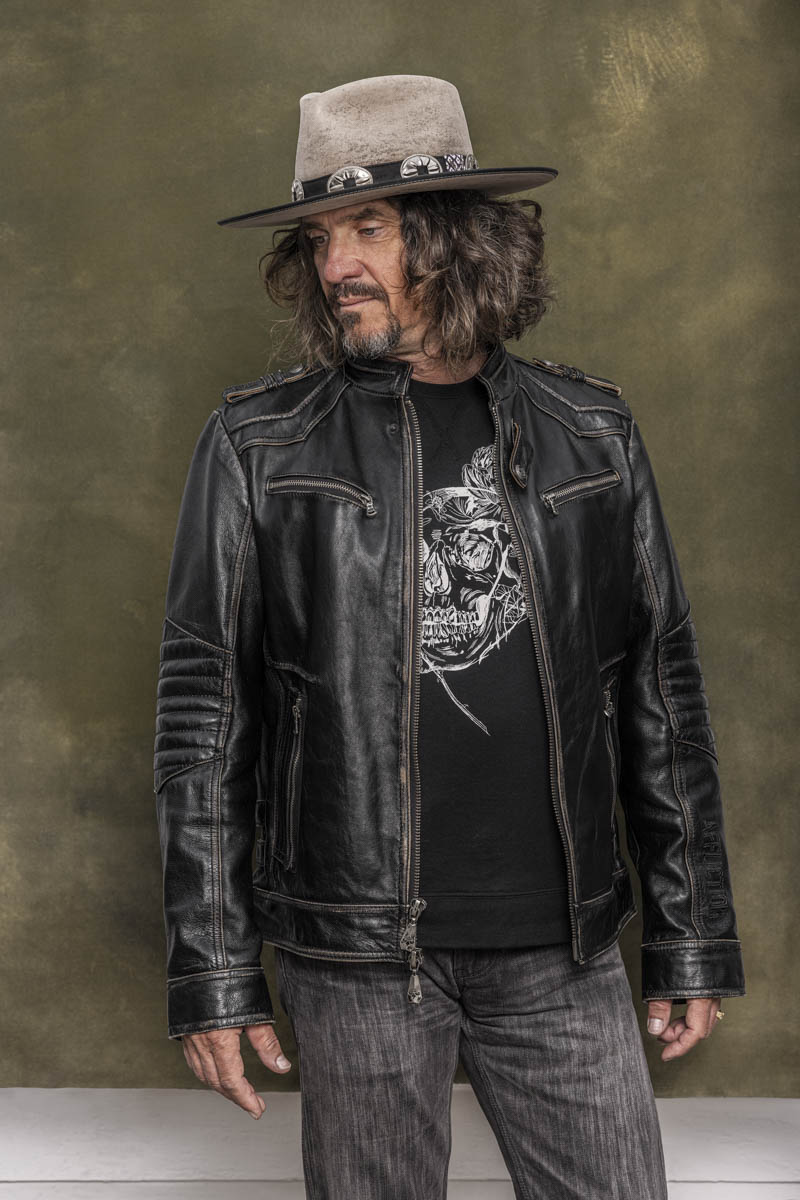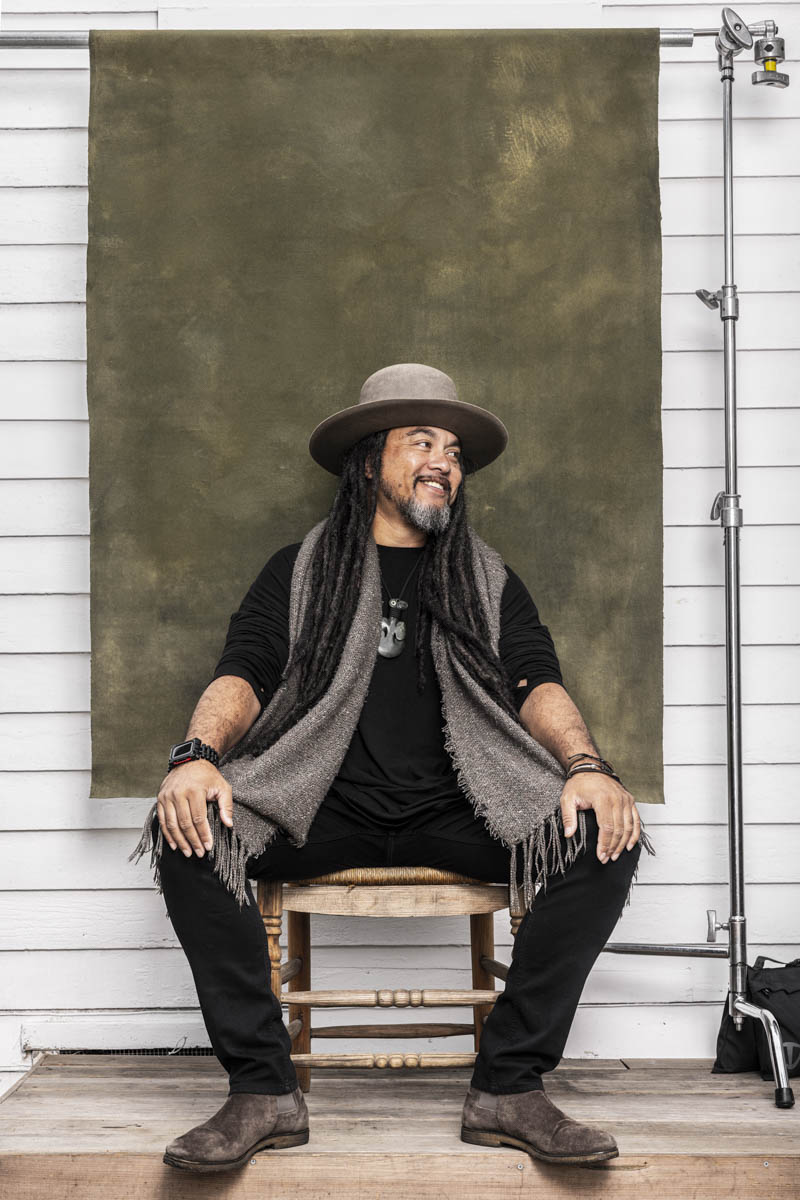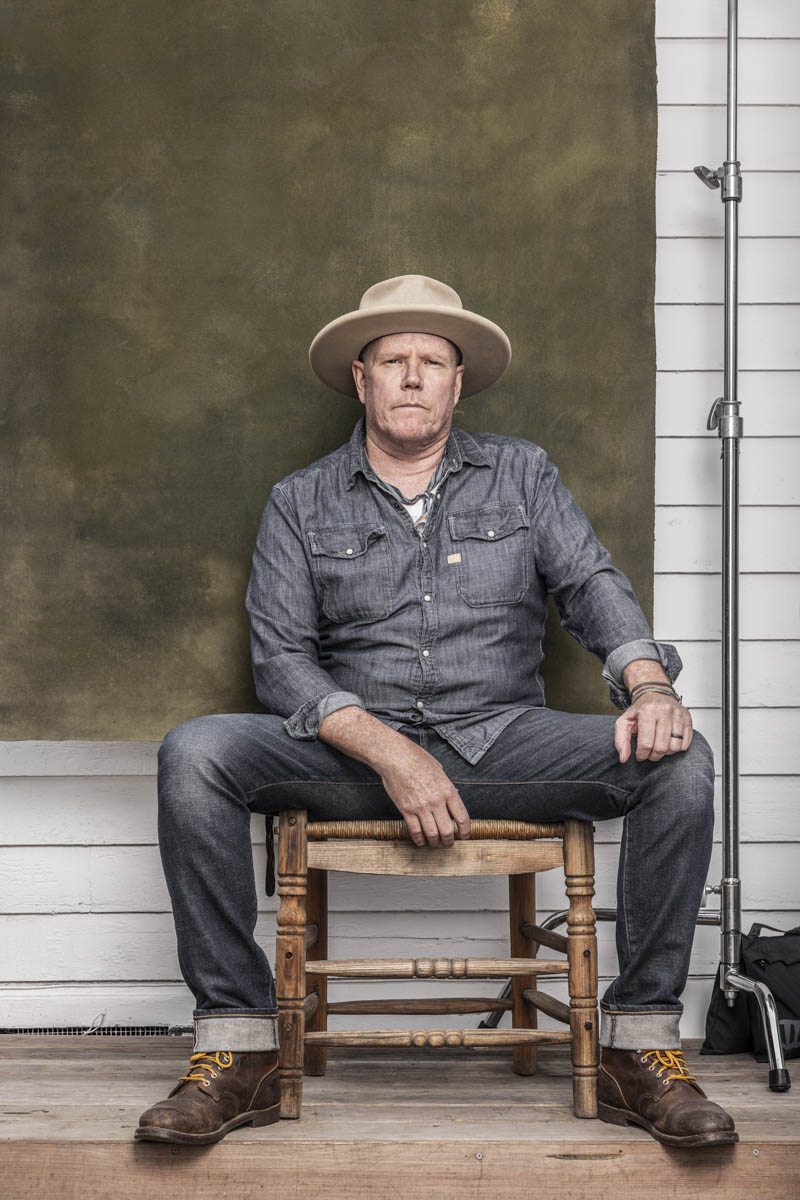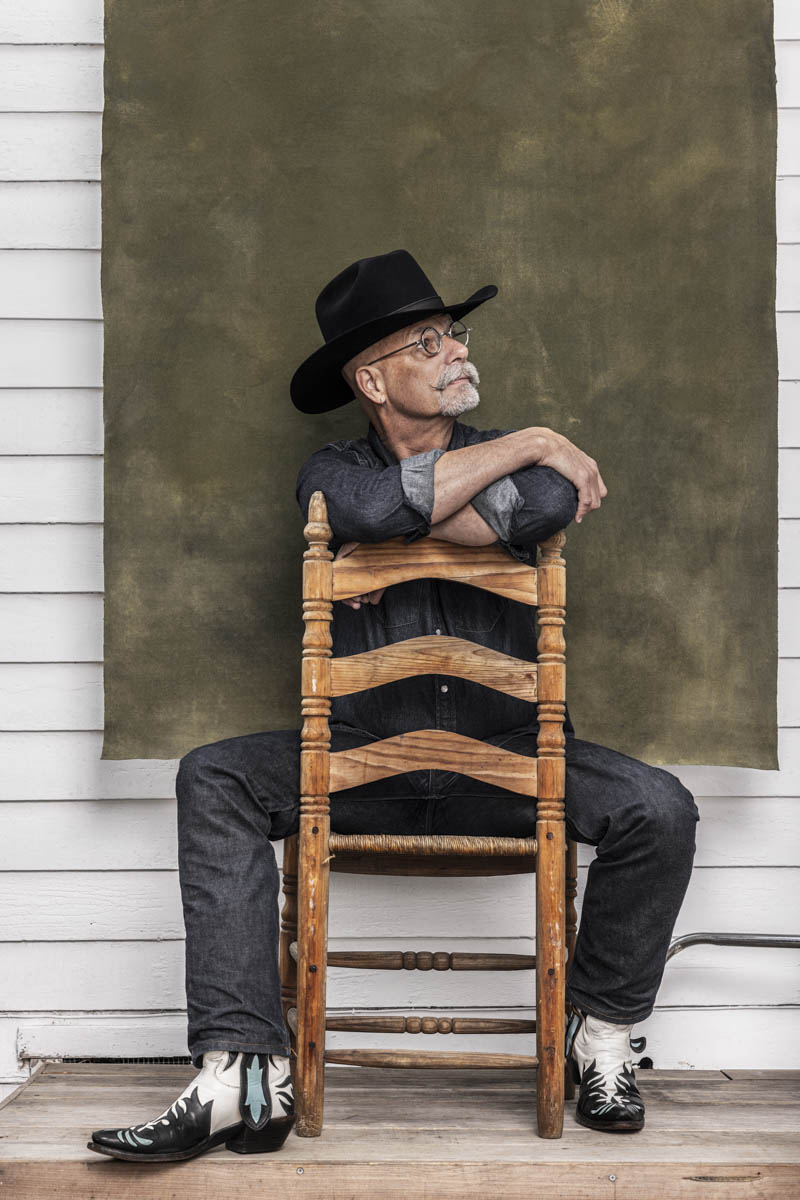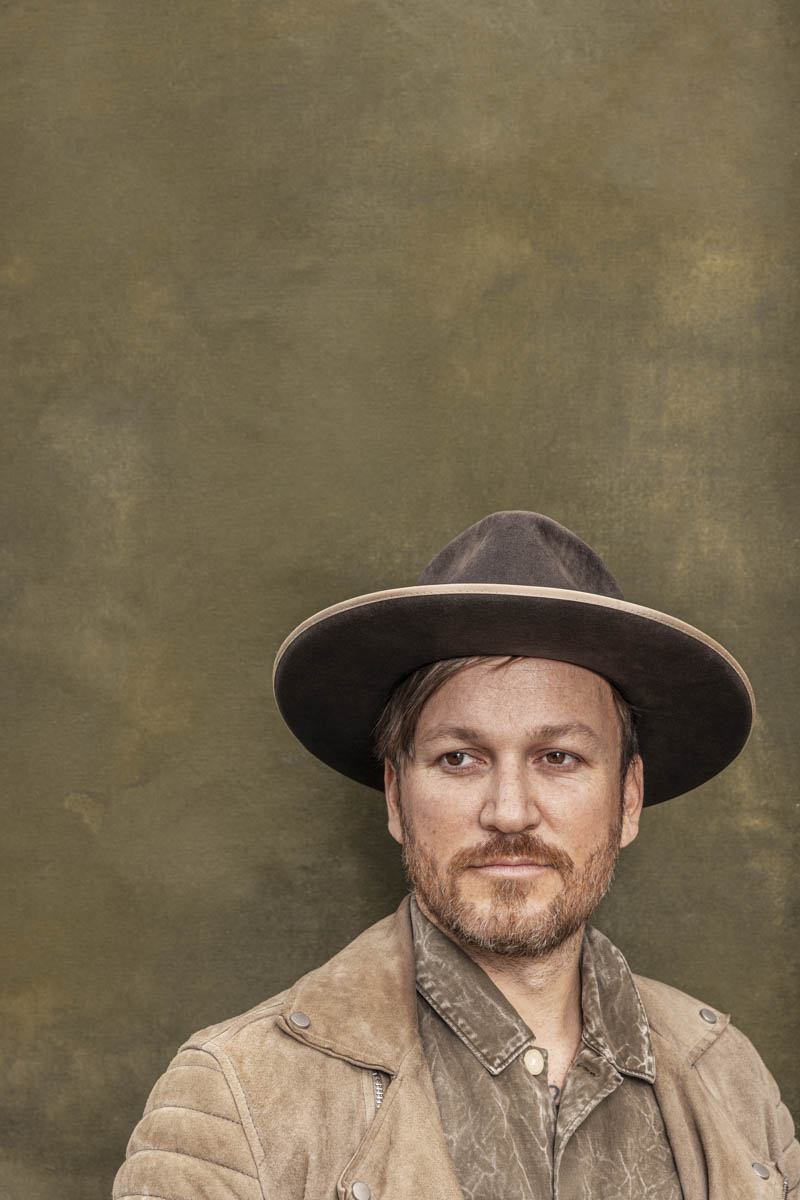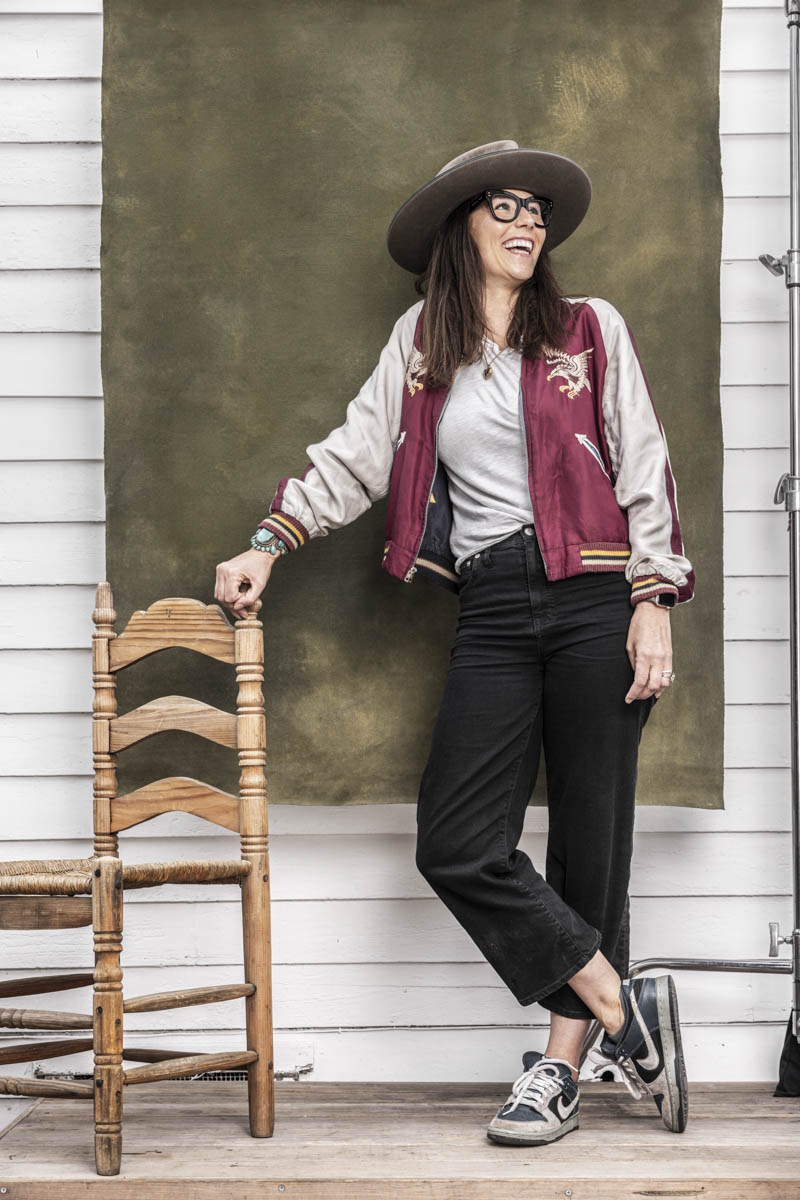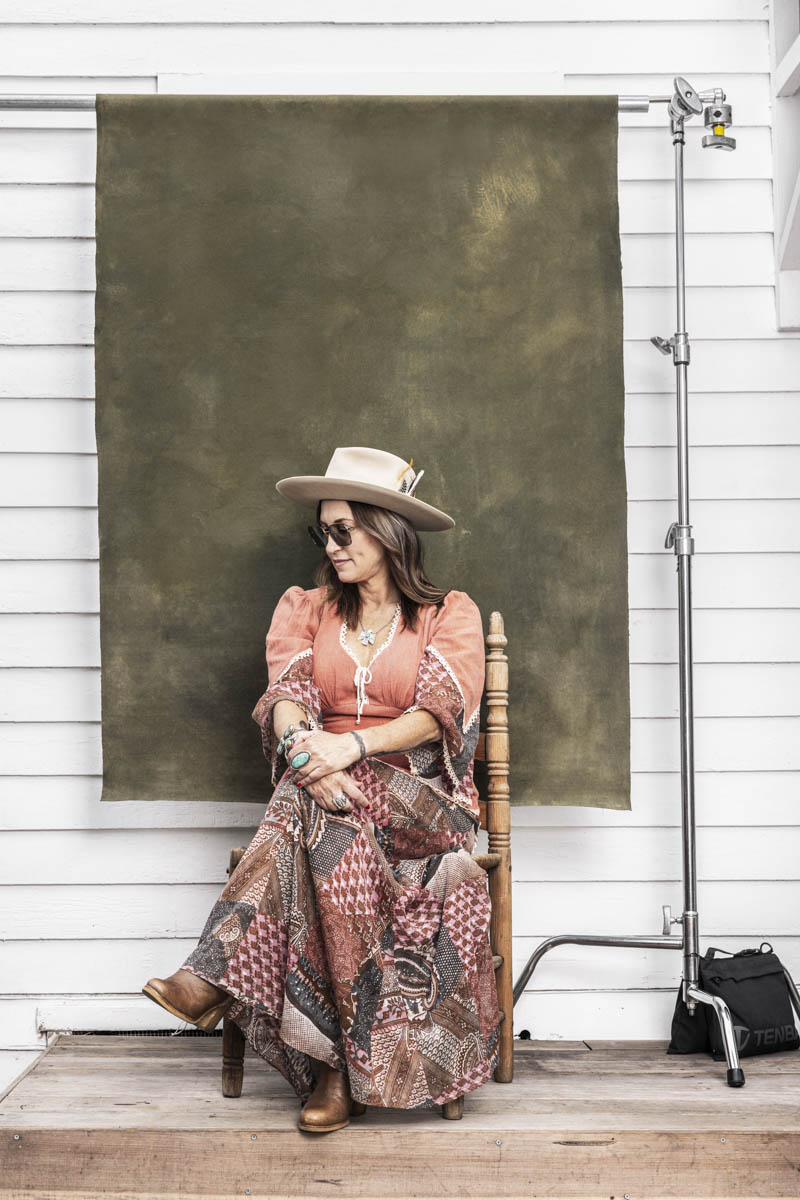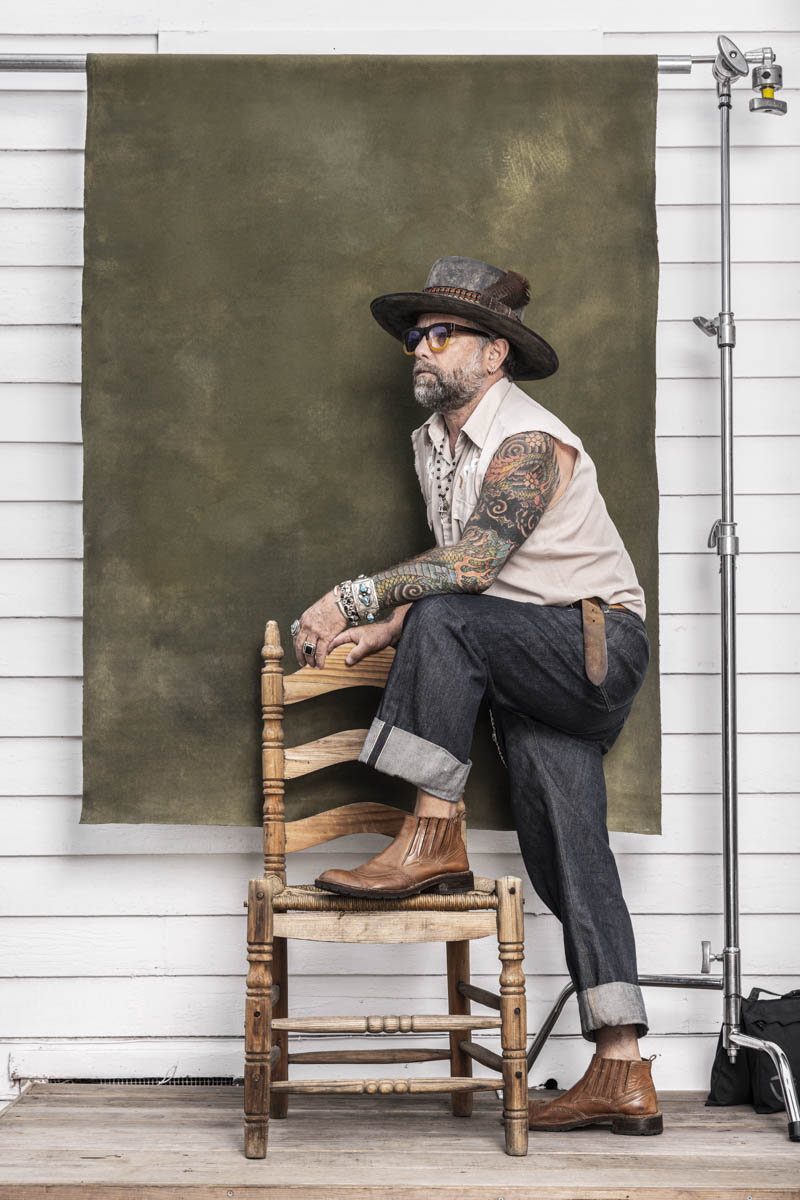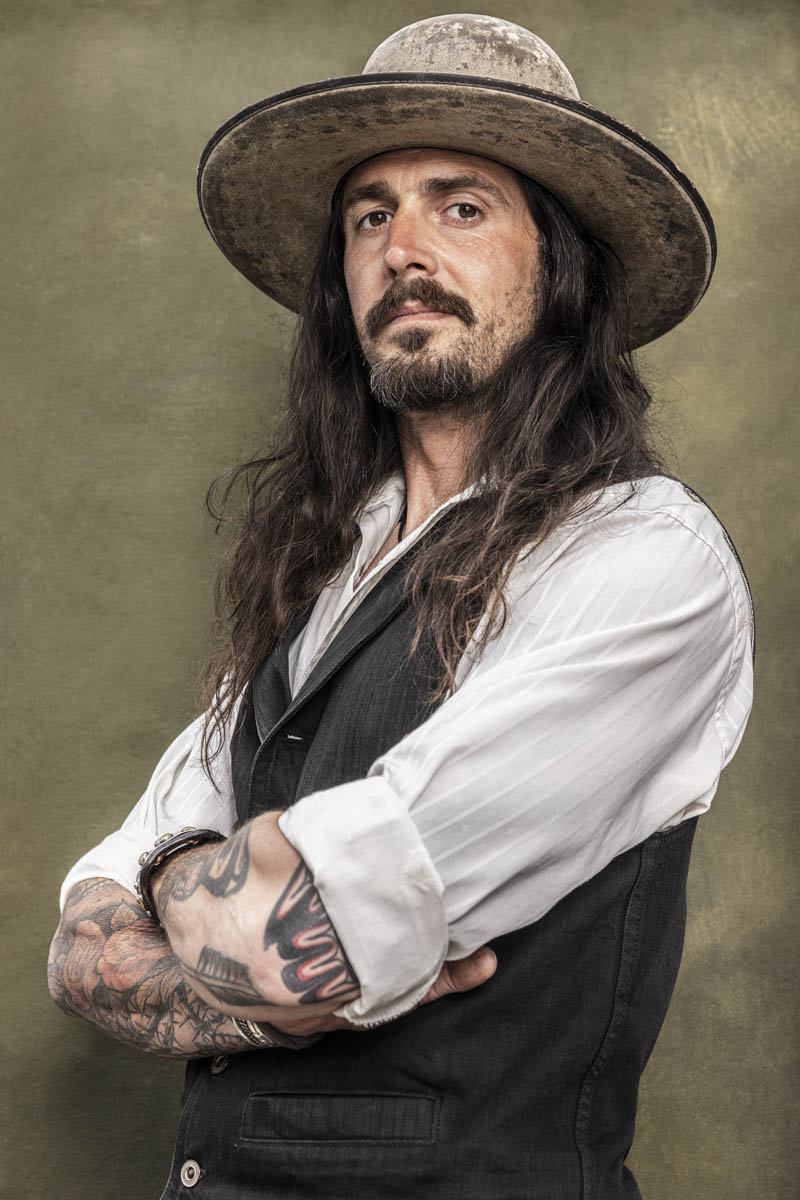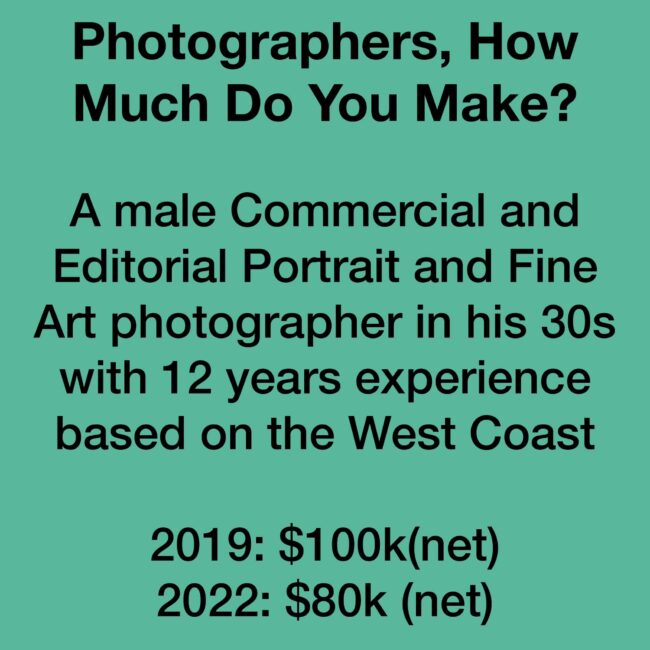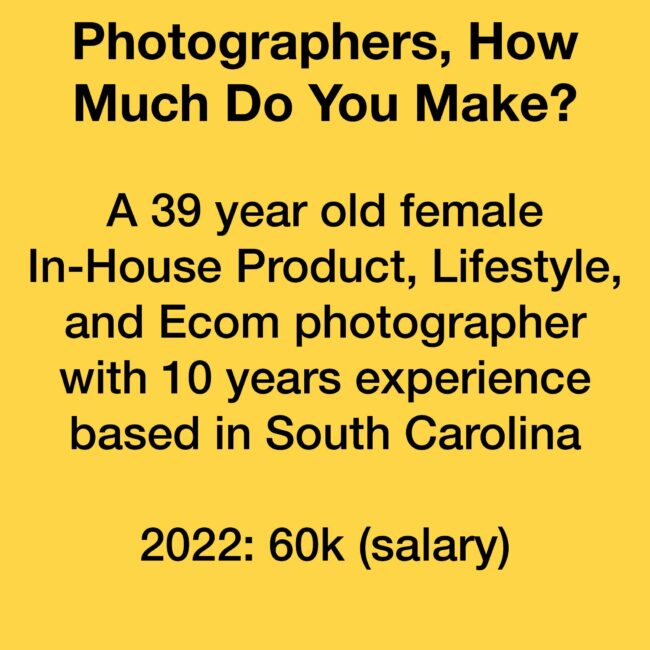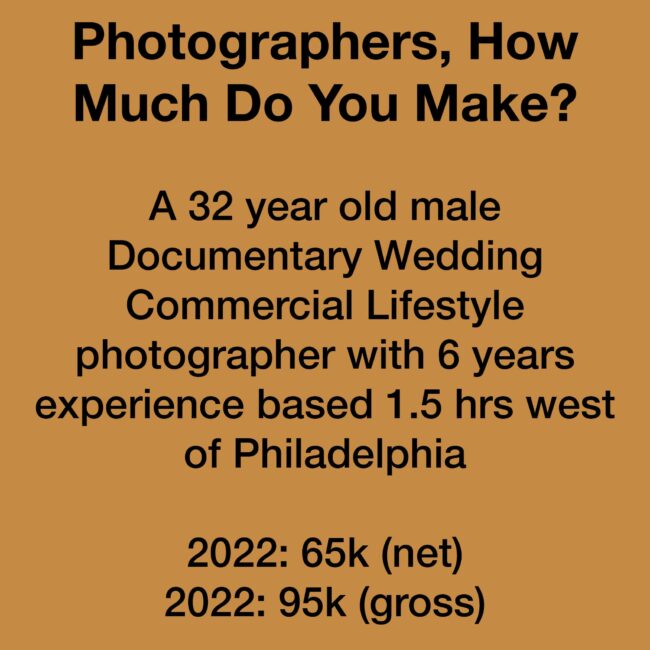
As you can see, on paper the numbers look a little all over the place, but the year that represents “normal” business for me the most is 2021. A lot of my years prior to 2020 are closer to 2021’s numbers or slightly above. I included 2023 numbers so far because things are on track to be “normal” for me again. In 2020, there was an obvious slow down from COVID, then in 2022 I voluntarily took off about 6 months to help with the birth of my son.
In a regular year, my gross income is around $450k to $550k. I don’t have a lot of overhead. I mostly travel for my jobs, and pass on all the related expenses to my clients. I don’t own a studio, and only have a small home office. No full time staff. I hire all my assistants, techs, producers, etc on a per job basis. I have my regulars that I work with often, and have different crews local to NY and LA and decide which to use based off where the job is. Outside of that, I’m usually looking for any reasonable business expenses I can safely write off. I have an agent that gets 30%, and my gross number already reflects that since I don’t take in their portion of a project’s fees.
Speaking of 30% agency fees; I read the comments on these and often see this as a point of debate. You can book some amazing, well paying jobs without an agent. This plays no part in whether you get hired, however, if you value your time like I do, then the right agent can be helpful and worth the money. My agency in particular makes me feel secure about our relationship. I talk with them all the time about strategy, and other things I’m curious about as far as how to better my business. They also add a huge layer of infrastructure that I feel like I need to handle my client base.
I don’t find sitting in front of the computer communicating with clients all that fun, or working on scheduling details for hypothetical projects which happens a lot. It sounds small, but when you’re working multiple jobs going from city to city, the last thing you wanna do is spend an hour answering emails once you have a moment to chill out. At the end of the day I consider this a highly personal decision, and not all agents are created equal, but if you have the right one then it can be something that adds to your bottom via a time return which in some ways can be more valuable than money.
I spent the majority of my career working in advertising with a concentration on sports and athletics. At the time that I got into it, it wasn’t nearly as popular of a category as it is now. Athleisure wasn’t a thing yet, but with my style and perspective I brought something different to a space that was overlooked by others who wanted to be in fashion and celeb entertainment. Eventually, I got my business to a place where I regularly work with celeb talent for big brands exclusively. Today, the category is more popular than ever and for that reason I’ve invested time in expanding beyond just sports. I now work with clients in tech, finance, pharma, and entertainment. This business moves in waves, so my expansion and ability to bring my style to other genres have helped me stay as busy as I want to be. A typical month for me can include working with a celebrity athlete for a big international client, then the following week working with non celeb, real people talent for a completely different kind of client like a bank or pharmaceutical company, then another week later shooting the keyart for a tv series. I think that this kind of versatility in my work and skillset is a unique edge that helps me earn the way I do. The key is that I shoot all these different types of subjects without changing my creative voice or point of view.
I’ve had a CPA from year 1, and right away she advised me to open a SEP IRA which I max out every year. This helps me save a nice amount on taxes by deferring them to when I start making withdrawals. This process has helped me build a rather nice sized retirement account which is valued at about $650k now. The first year I opened it with about $7k, so I’m proud of how much I’ve been able to grow it in such a short time through saving and investing. I pay pretty close attention to my investment portfolio outside of my retirement account, but this is more so a long term vehicle that I don’t really take money out of, and only continue to add to it when I have any extra money.
I normally do 1 or 2 multi day shoots a month that amount to about 2 weeks of physical work. Maybe 3 if things are really busy. Otherwise, I spend my days off on creative calls, and production related calls for any projects I’m working on. I also spend a good amount of time researching and understanding whatever is happening in the industry that affects me. This includes doing a lot of reading or even being on IG researching what agencies clients are working with, and trying to understand who I need help getting work in front of. In the past, more towards the beginning of my career I did a lot more shoots per month, but they were lower quality as far as day rate, and usually less shoot days. That meant I had to do around 5-6 shoots per month to equal the monthly return I get now. My current workload is perfect for me and my family’s lifestyle. I work just enough to not feel like I’m getting burned out.
I had a couple of years in the past where I netted $750k, or close to $900k. I was a bit younger then with a more intense drive because I knew how hard it was to get started. I was saying yes to nearly everything with almost no regard for my body or well being. I was on a mission, so none of that mattered. I just wanted to make as much money as possible. In that phase, I wasn’t necessarily looking for balance, where as in this current phase of my life I value the time I don’t spend working a lot more. I enjoy being home, and spending time with family and friends.
There has been a deliberate decision to pull back and focus more on the quality of jobs versus the quantity. In turn, that has lowered my bottom line but I couldn’t be happier. Granted, I used the income from those “go hard” periods to pay off student loans for myself and my wife, buy a home, and knock off other big financial burdens which allow me to take it a little easier now. Now, I’m making a really good living without the pressure of needing to find a way to get bigger.
My best paying shoot was for a tech client. The shoot was about 2 weeks long including all the travel, prep, and shoot days. My fees were $170k after expenses and rep commission. This is my best paying job as far as the amount, but I had another job that paid around $80k after fees, and it was just a two day shoot with about 4 travel days. This was my best job as far as how much I made against how much time I actually worked.
When i first started I did a shoot as a favor for an art director, and got offered a pair of sneakers. I never got the sneakers lol, so this was my “worst” paying shoot. Honestly, I was super young, and the pics I got from it ended up being worth more than the sneakers. I used the shots to get so much more work after that, and thats the lesson I would pass on to any one reading this. Free work is almost inevitable, but be strategic about it. You need to assess how you can leverage a small opportunity into something bigger. The something bigger might not be the shots you get. It could also mean getting on set with an agency, or art buyer/art director you really wanna meet. Also, you still wanna do proper paperwork/estimate for this kind of exchange then show how you discounted you normal rate to meet whatever payment you agreed to. This helps you not short change yourself if you continue working with these same people again in the future.
I also direct video, but it’s almost a separate thing from my photography. I never personally shoot video, and sometimes get added fees as a director on my photoshoots. I always bring on a DP that can match my style, and direct them on what I want. I’ve directed some decently budgeted commercials before too where I did no still photography, and could do this more but I don’t love the process although it can be fun sometimes. A pretty small percentage of my income comes from this setup. I’ll likely explore straight up directing more in the future.
In the age of everything being digital, I’m a huge fan of trying to meet as many people as you can in person. No matter how good your work is, a huge part of being successful in this business is who you know, and who knows you. I have a rather easy going personality, and have been told that I have a calming presence. A lot of my clients describe situations that are chaotic or need me to work with celeb personalities that can be unpredictable. It helps if you are not adding to this stress, and they know you can handle a high pressure situation with ease. This is something thats very important, but hard to get from an email or DM. When there’s a client I want to meet, my agent usually leverages their existing connections to get me a meeting when I’m in town, and more recently Zoom/virtual meetings if schedules don’t allow for in person. In addition to that, my agency advertises as a group through newsletters, social media, and events like Le Book along with specific blasts about what each artist is working on. I used to do printed promos and mailers, but stopped after I took a break for a while on doing it, and business stayed strong. Instead, I invest money occasionally in personal shoots that interest me.
I started my professional career in 2011/2012, and as many other Black photographers have experienced at some point, I was told back then that I needed to shoot more White people and if I didn’t, I wouldn’t be successful in this business. Even though it wasn’t that long ago, that was a common thought back then. Black faces in front of the camera for ad campaigns just wasn’t a normal thing at that time, so when you presented a book full of them, some people didn’t know how to critique it without making the work about that. Needless to say, that was the worst advice I was given.
I have so much to say here, but I will try to keep it brief and concise. I’m very proud of the career I’ve had thus far. It can end tomorrow, and I would be happy with all the things I’ve done. A relentless work ethic in developing my skills, a keen understanding of business, and a bit of luck are all the things I think were key in getting me here.
Bury yourself in the craft, and develop a strong creative voice/perspective. I think too many are concerned with getting work too fast, instead of focusing on building their taste level. A strong creative voice will bring you more work than you can imagine, but getting there takes time. Once you get into business, and start making money the pressure to continue making money only increases, which in turn takes away from the time and energy you have to really focus on getting better and understanding what you like. That cycle can be hard to break, and can create an environment where people find themselves stuck at a certain level and/or unhappy with the work that they attract.
Next, get out and meet people within the industry face to face. Emailing, and dm’ing is great for opening a conversation, but I found a lot more success from meeting people in person. I think its because you become a real person at that point as opposed to being black and white letters on a screen. Art directors, art buyers, etc are busy people and get emailed a lot so it can be hard to stand out. Don’t get discouraged by not hearing back right away. You have to stay persistent and keep trying.
As a working artist, the insecure feeling of “it can be over tomorrow” never leaves. It’s a feeling you must learn to live with, and work through. I have learned to use this feeling as motivation versus it being something that debilitates me. The task of becoming and continuing to be a working artist can be overwhelming, so I committed a long time ago to doing at least one thing a day that helps my business, and it doesn’t matter how big or small the one thing is. I do this because it helps me stay focused on the process and know that even when I’m not seeing the results everyday I’m still moving forward.
Lastly, know your client’s love language. For most of the projects I get, I have to go through a bidding process that includes a creative call and sometimes presenting a treatment. My win rate increased a lot when I became good at understanding from job to job what qualities my potential client valued. From there, knowing how to articulate my understanding of those values in real time gave me an edge. Reading people, and knowing how to sell yourself is a huge part of being successful in this business. Having good work is just one part of the equation, but once you add the confidence to sell yourself you’ll be able to take your opportunities to the next level.
P.S. ChatGPT wrote all of this, just kidding! Thanks for reading.
